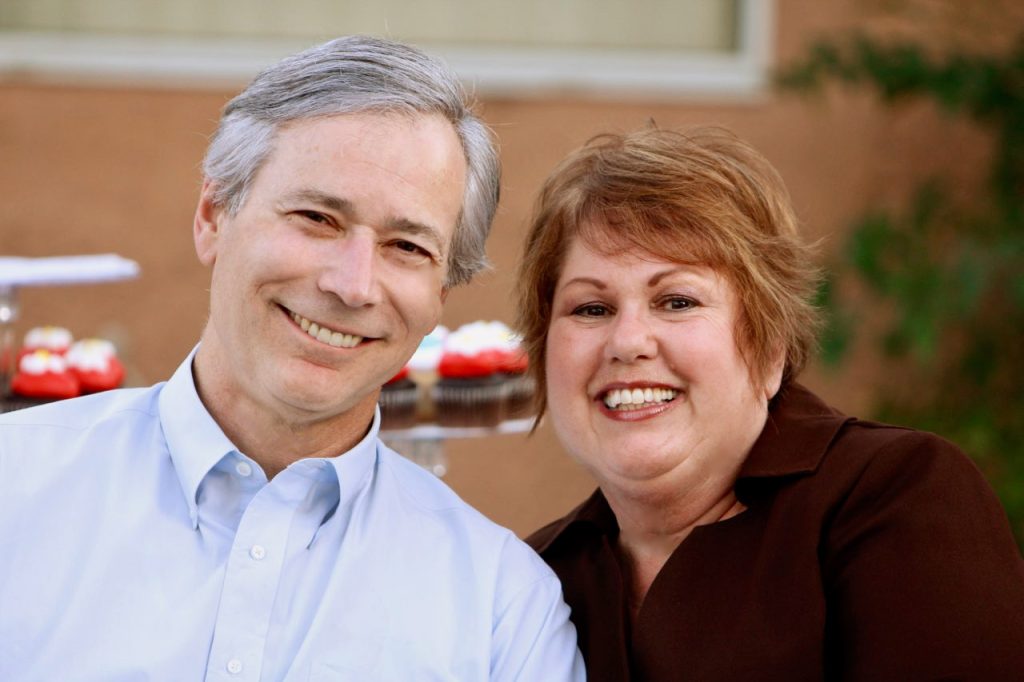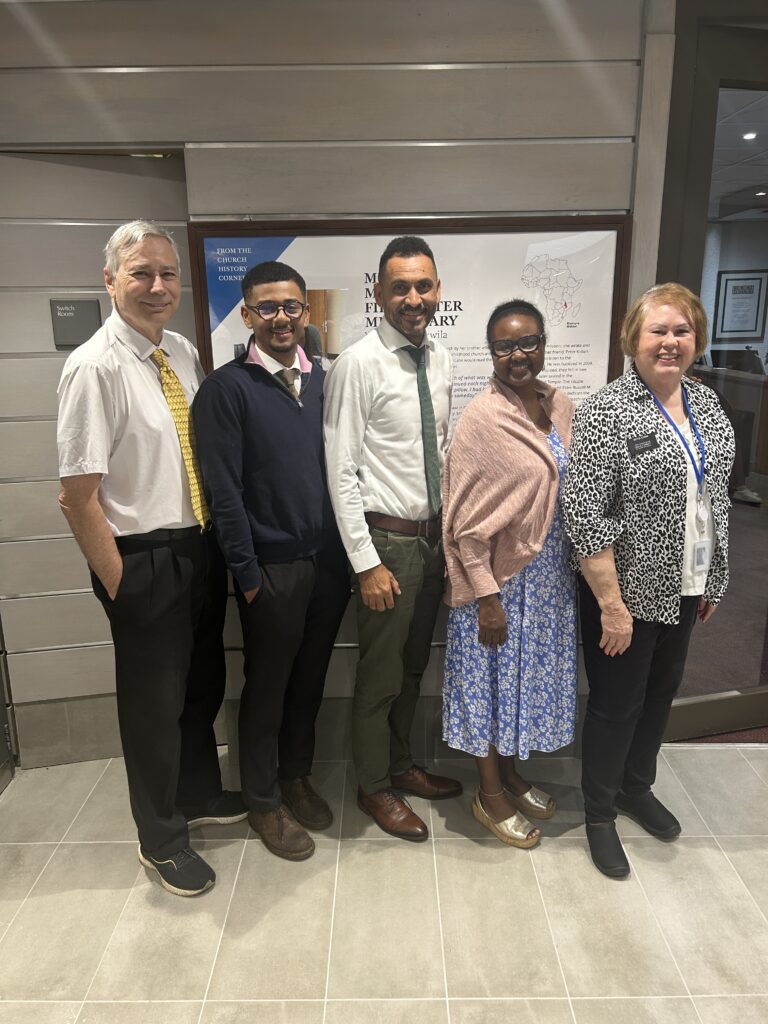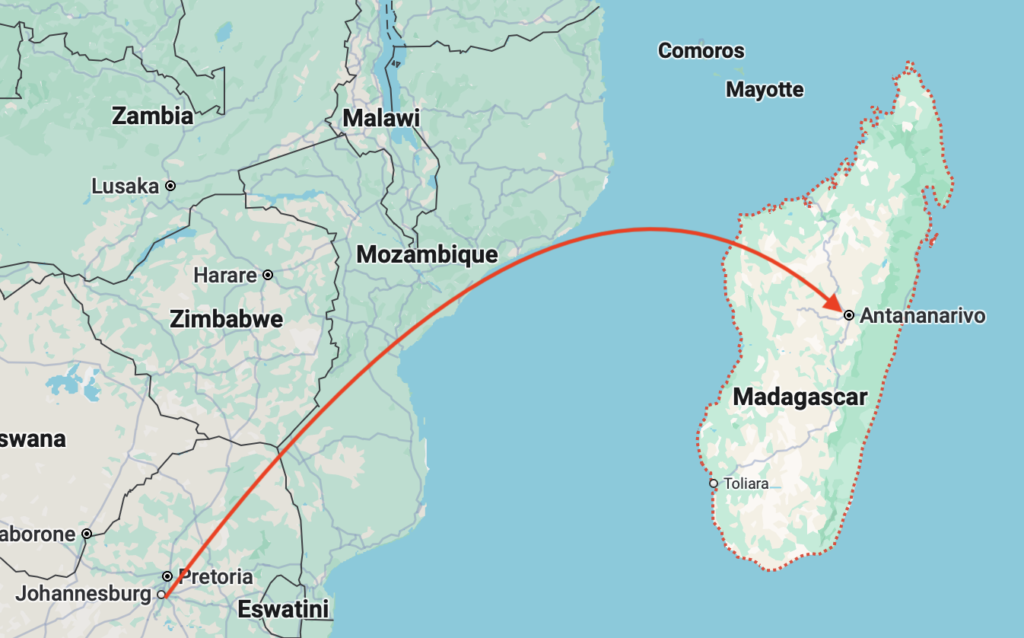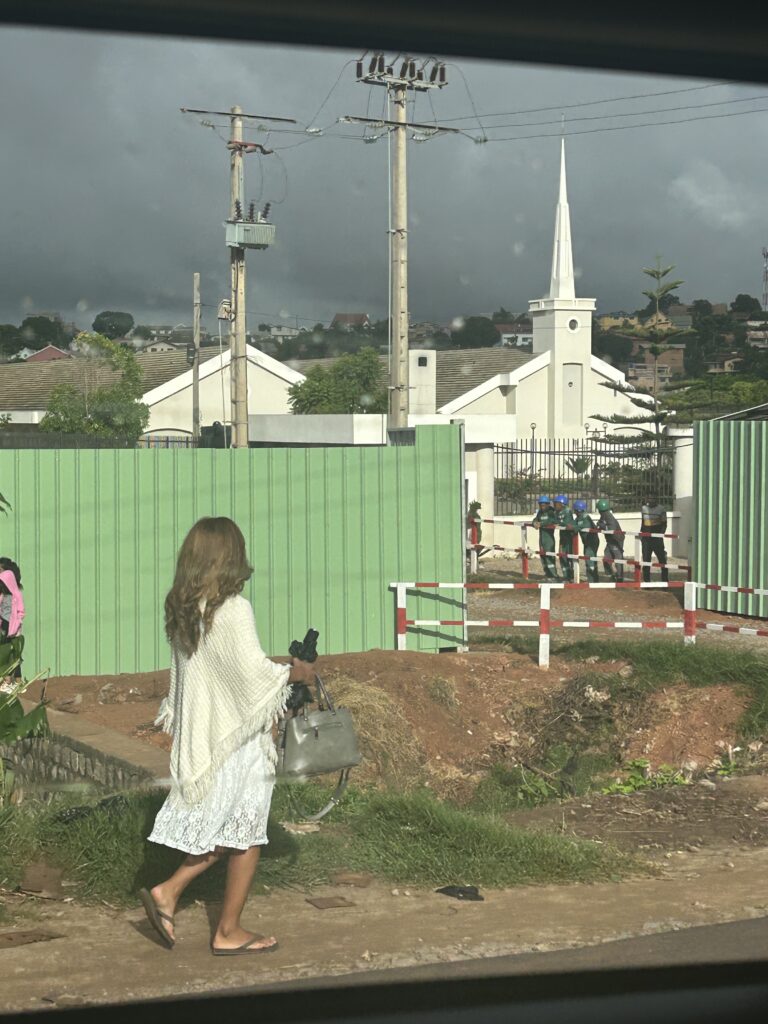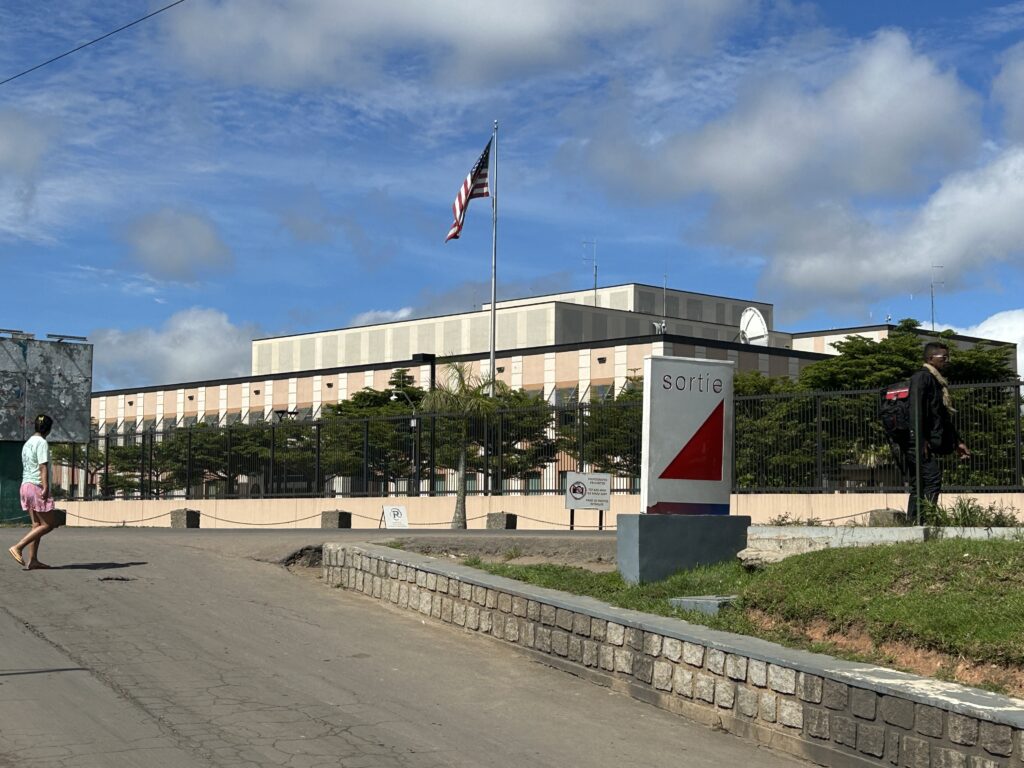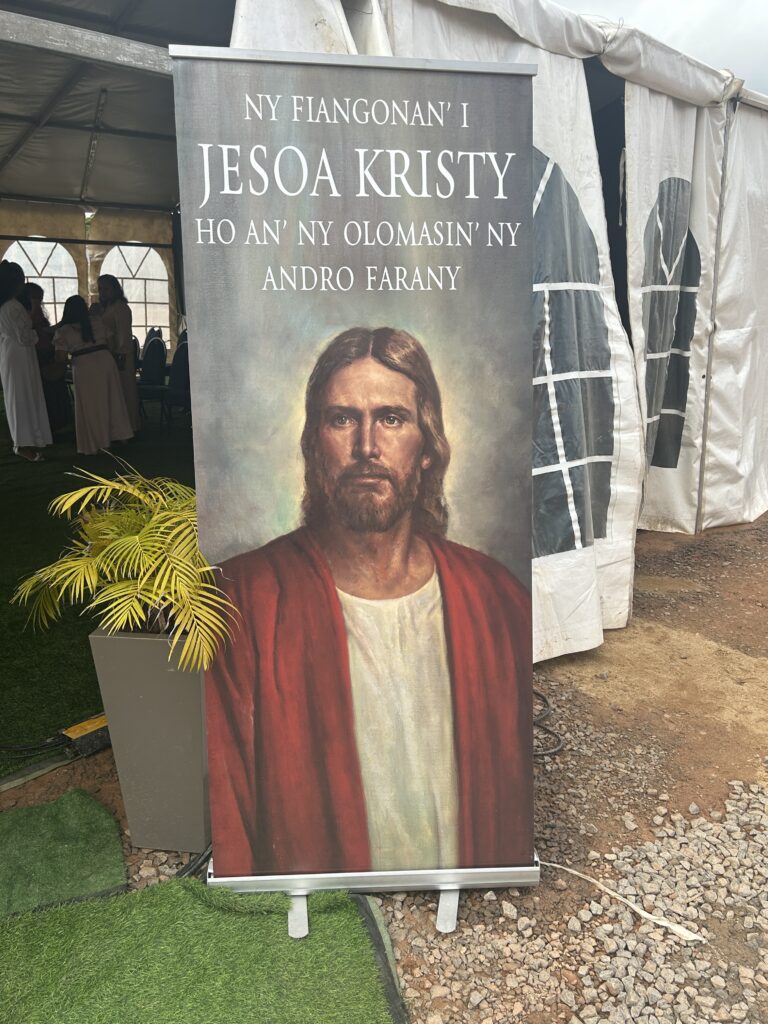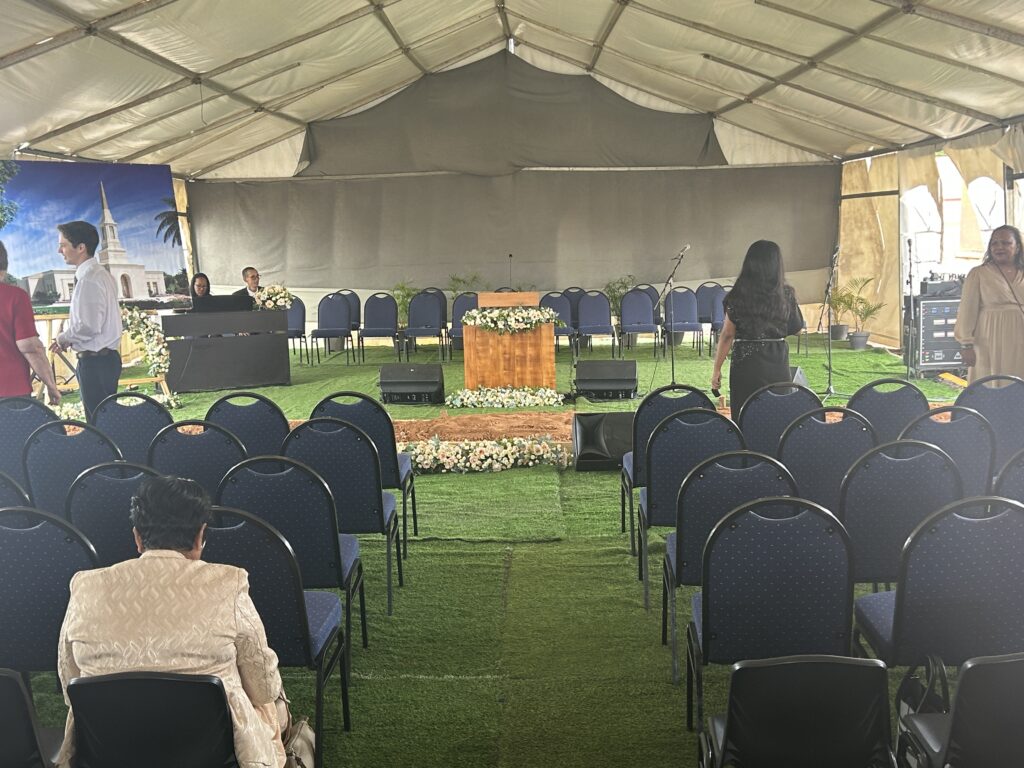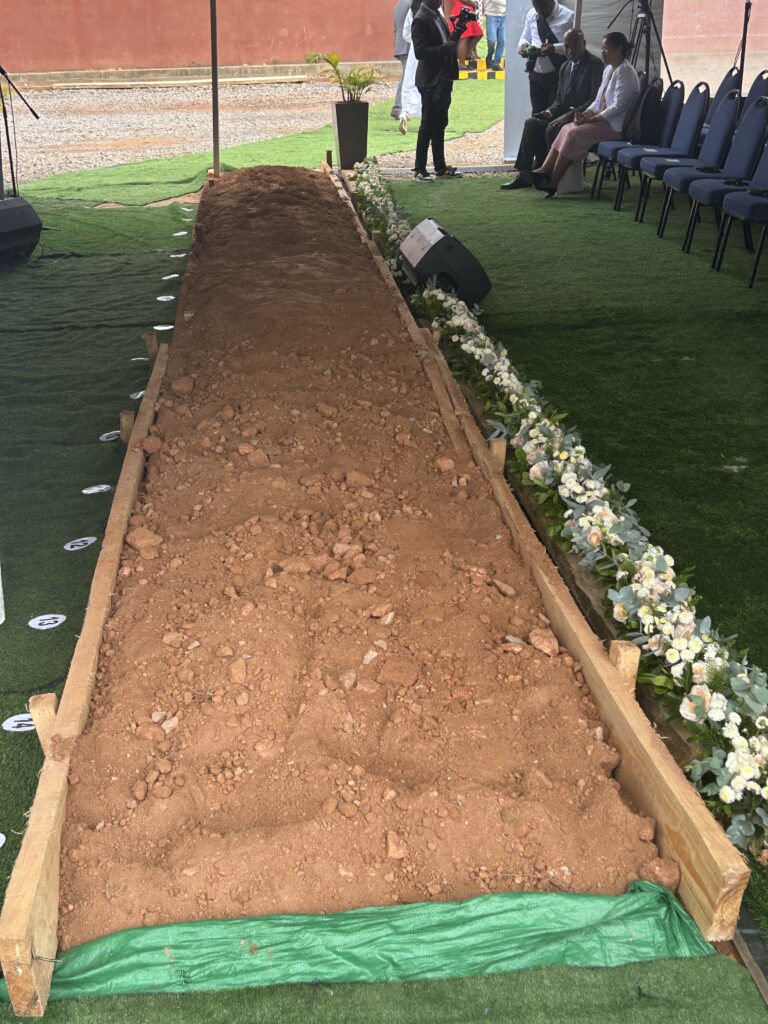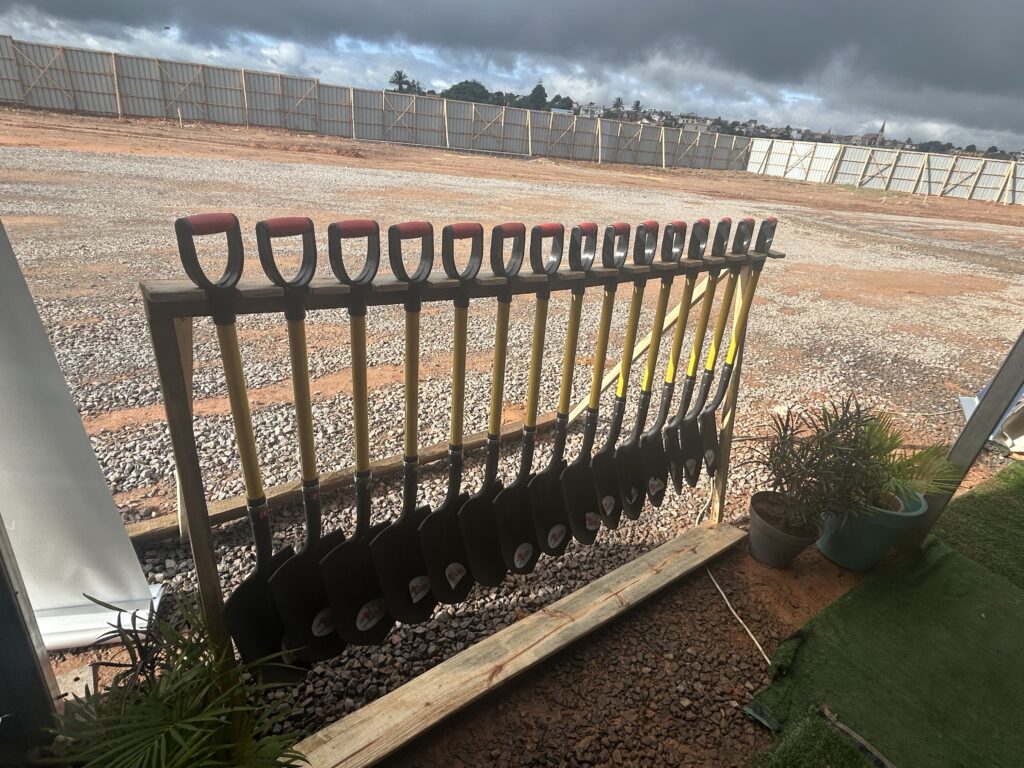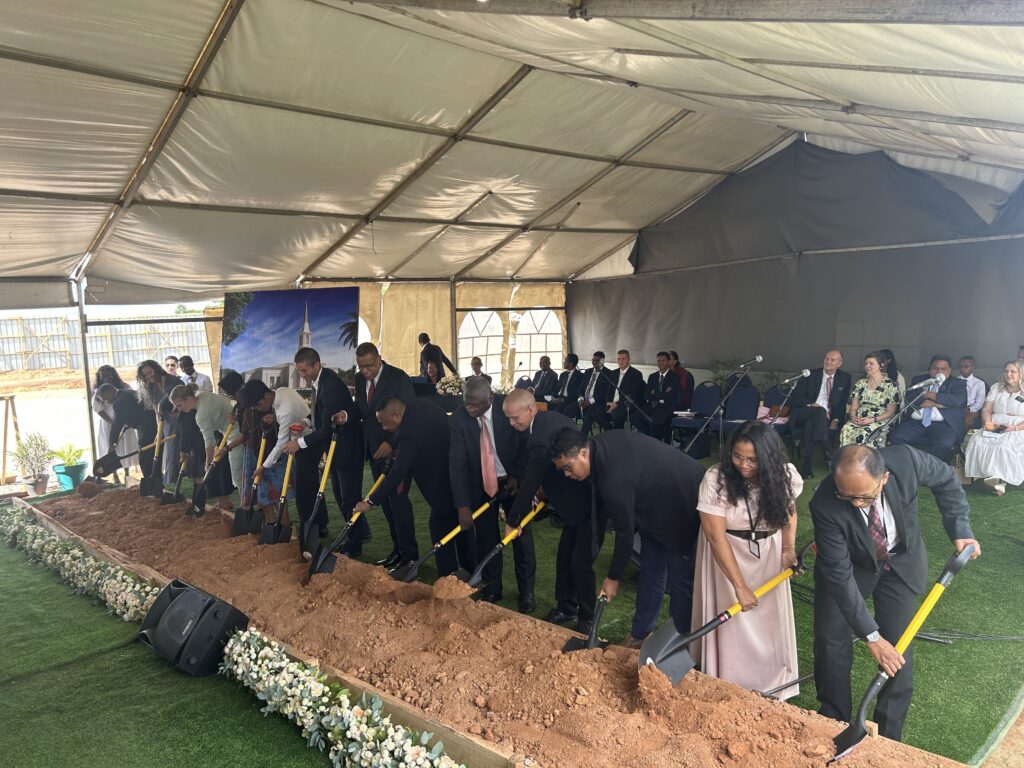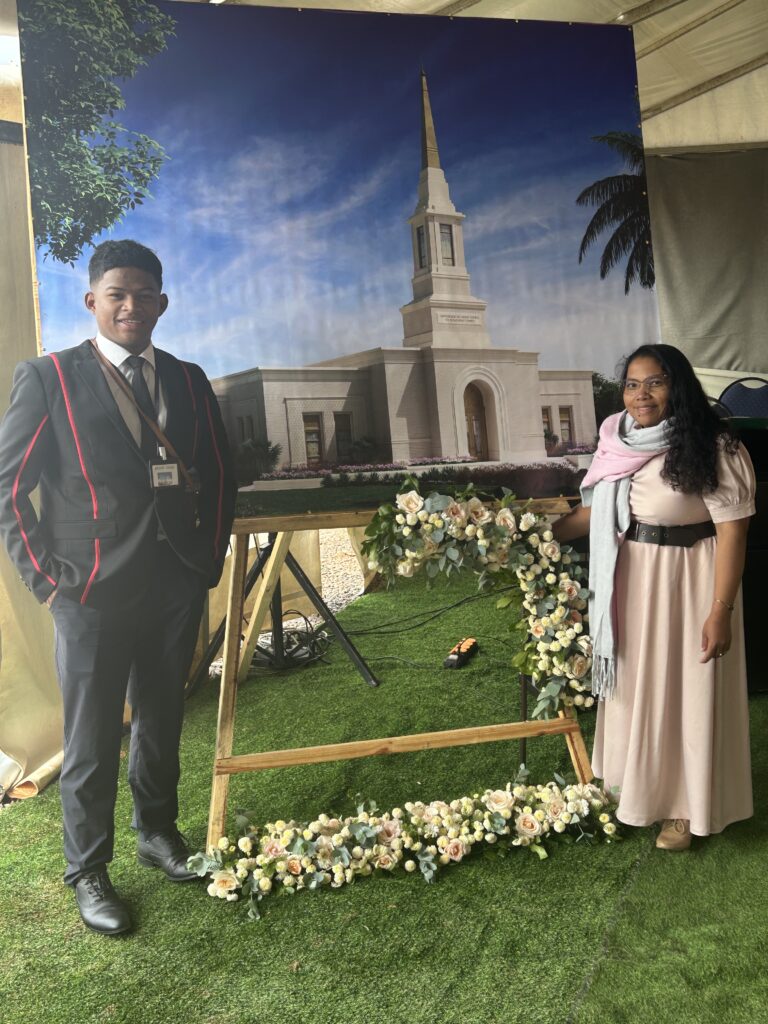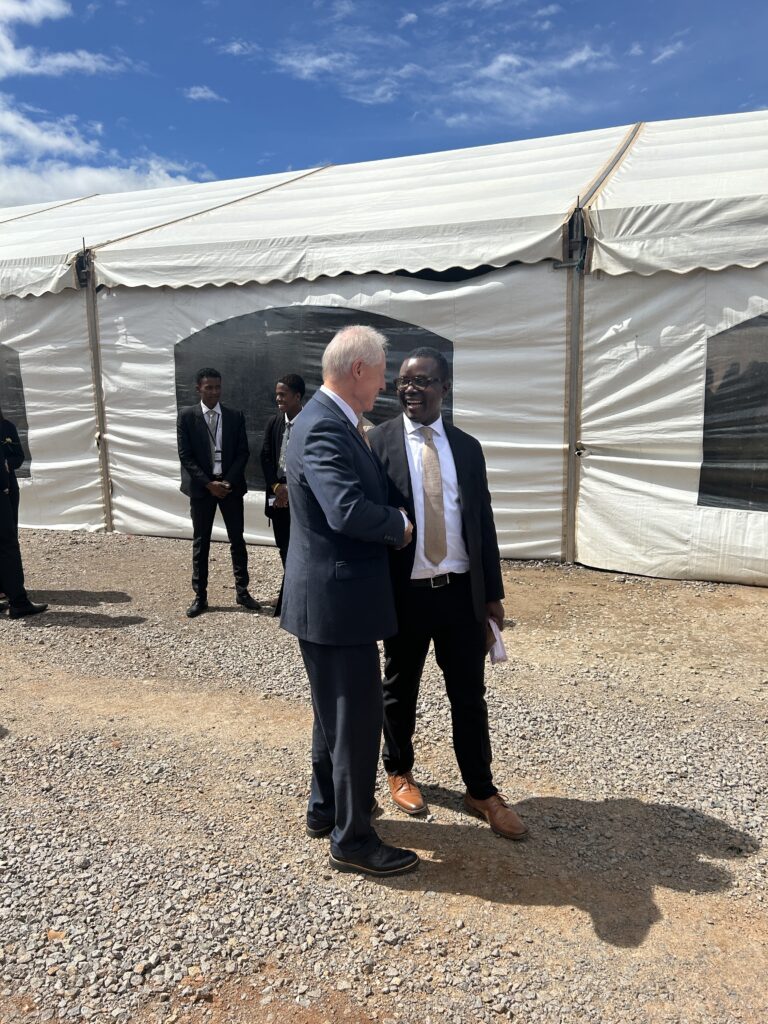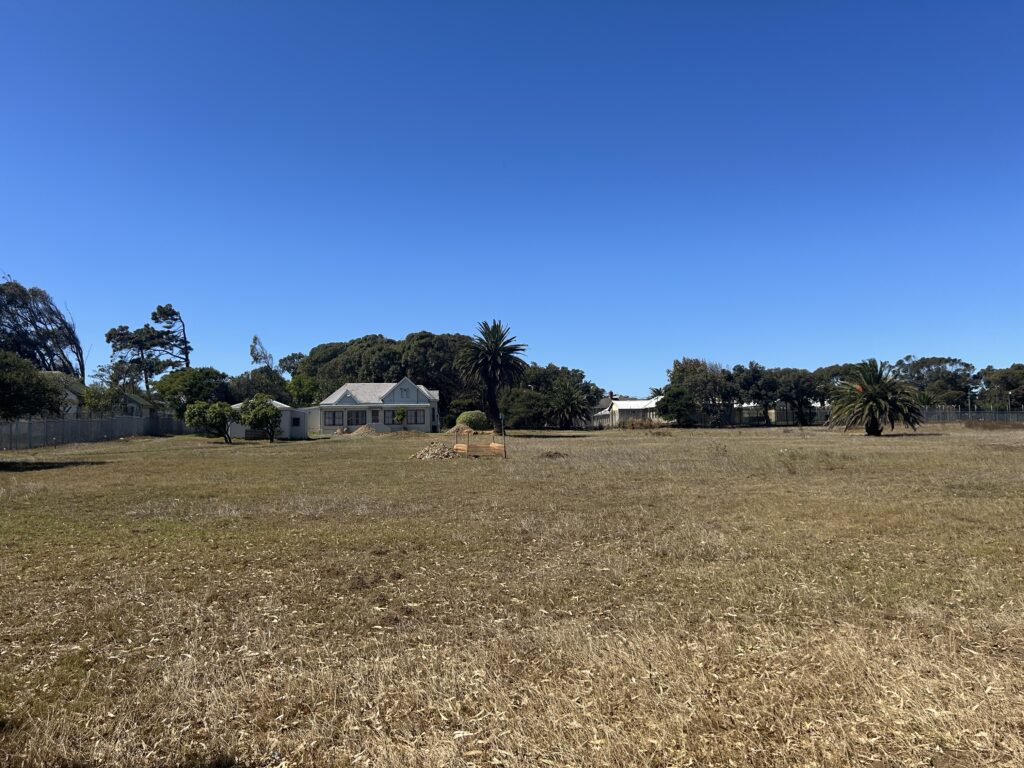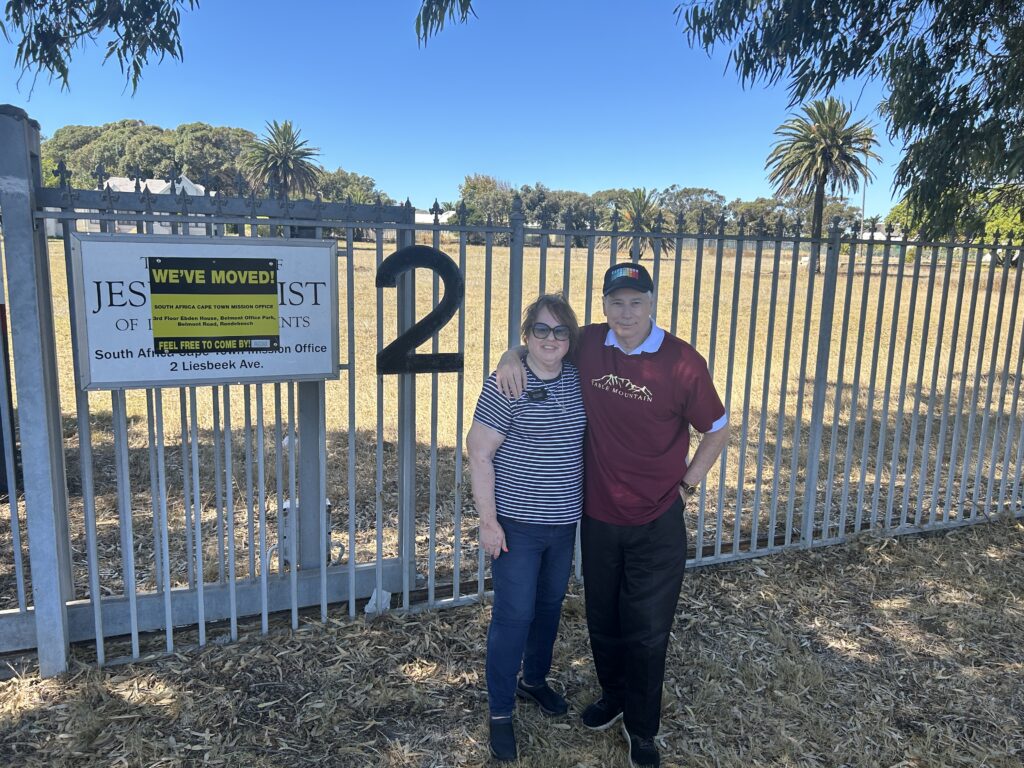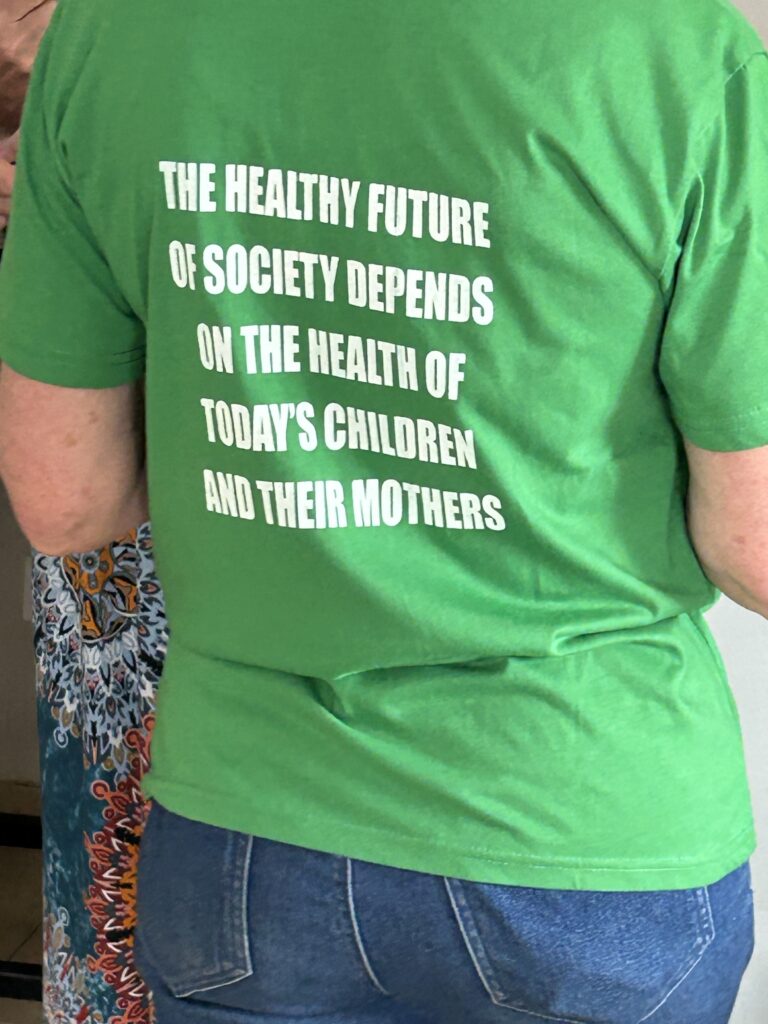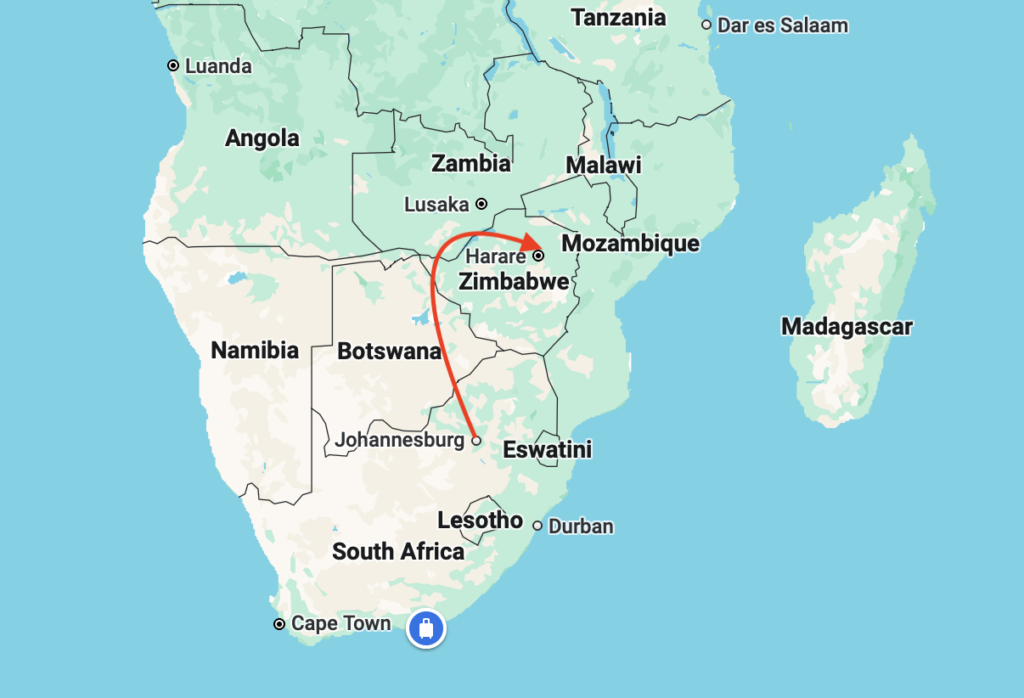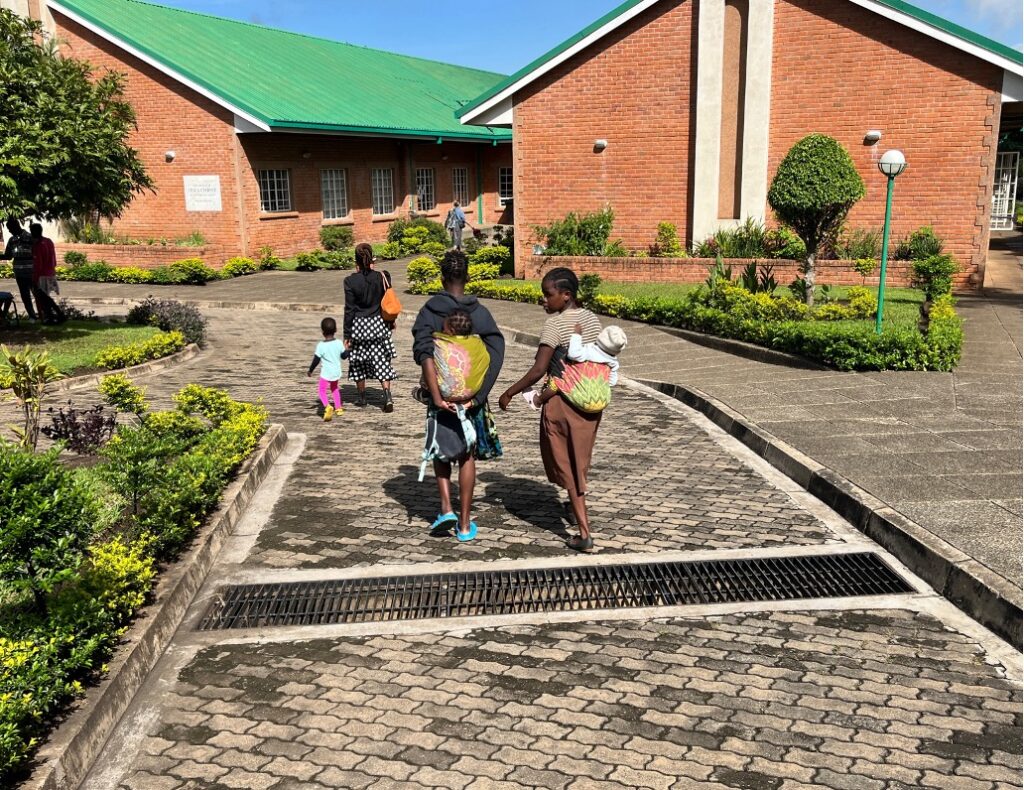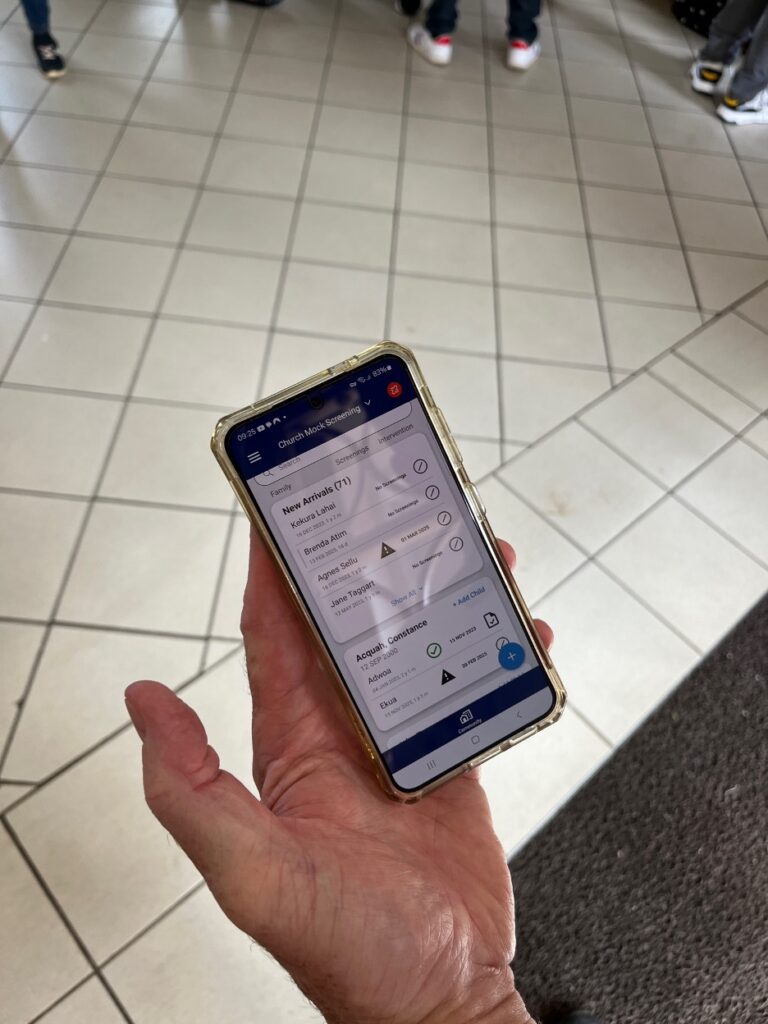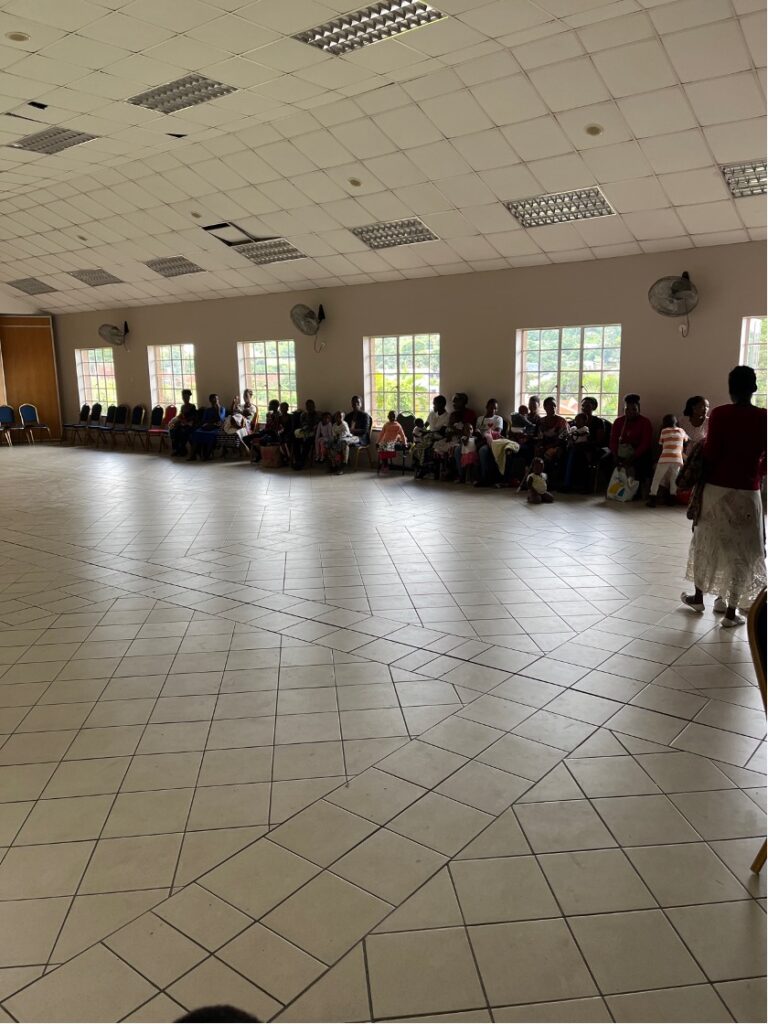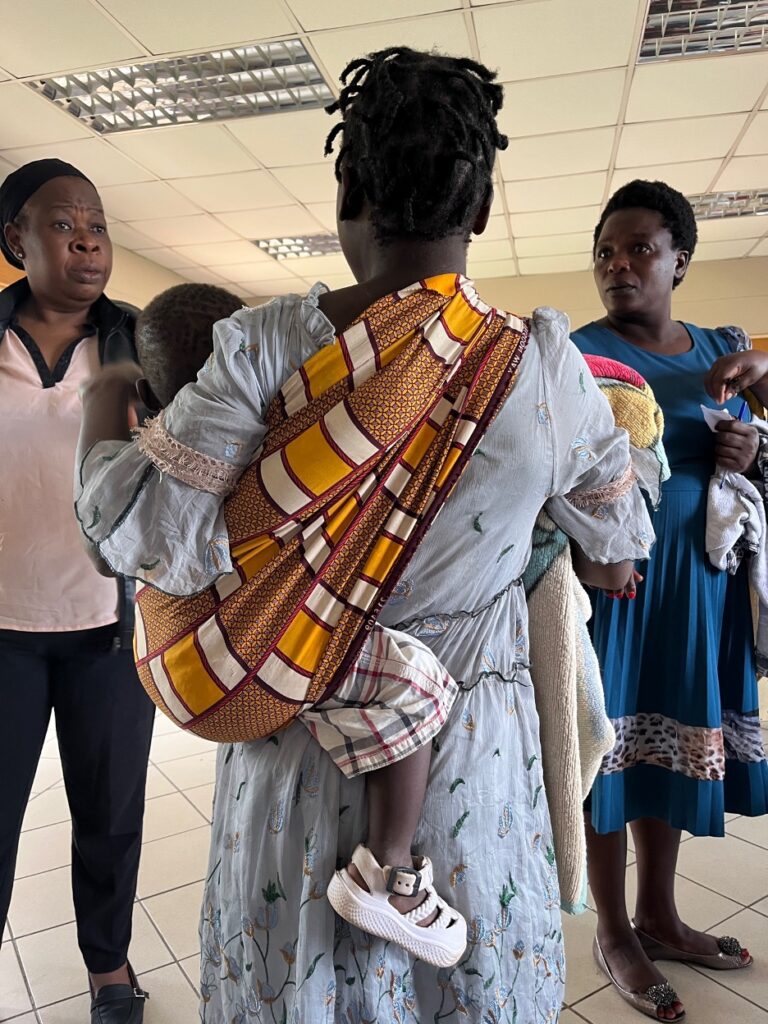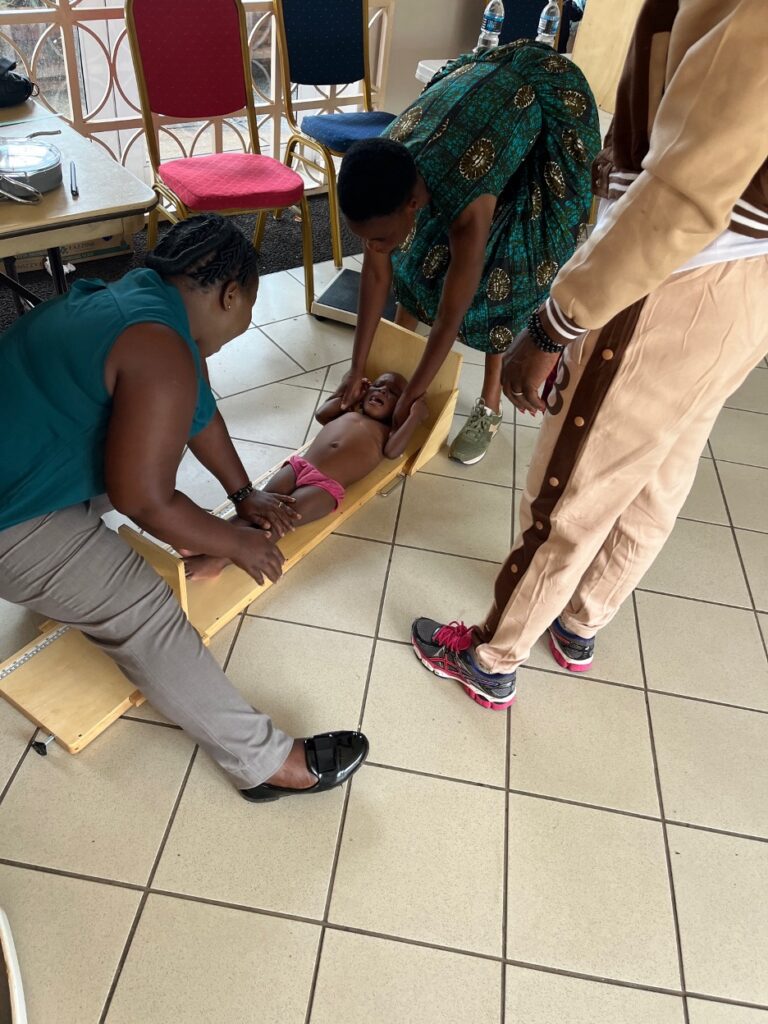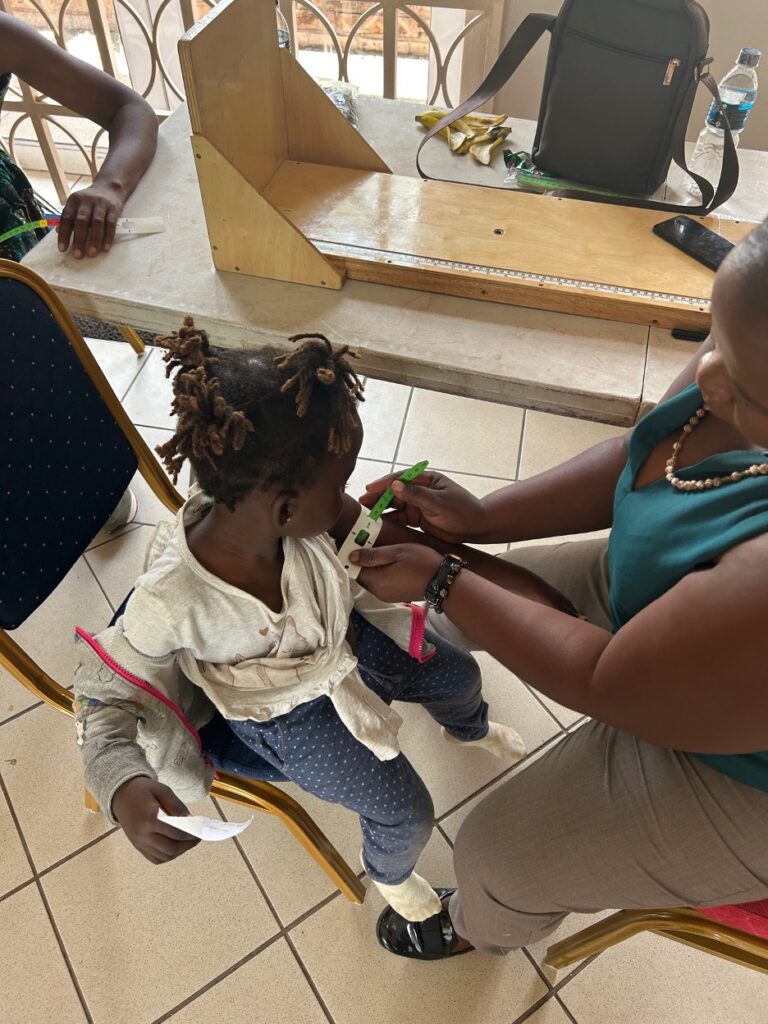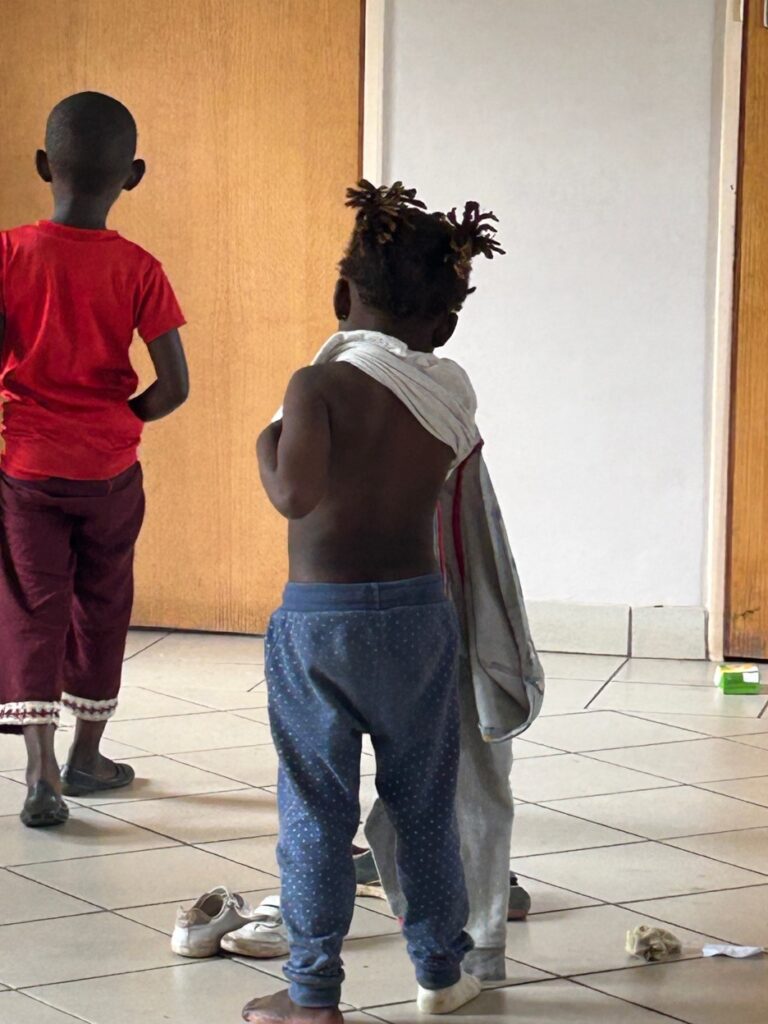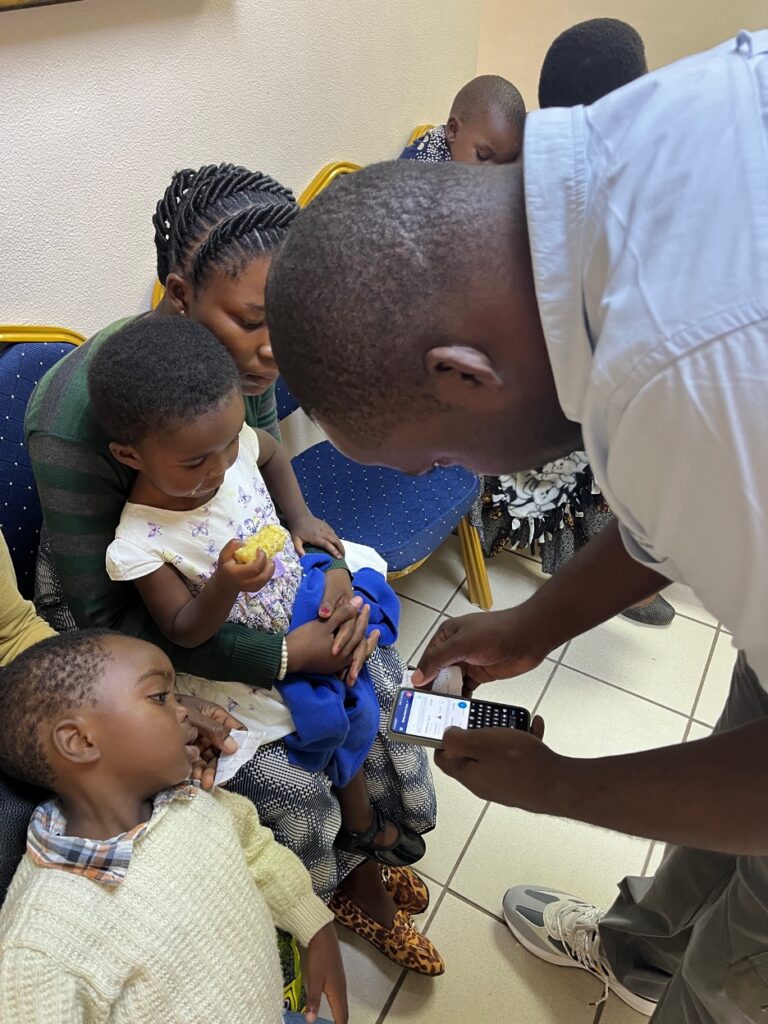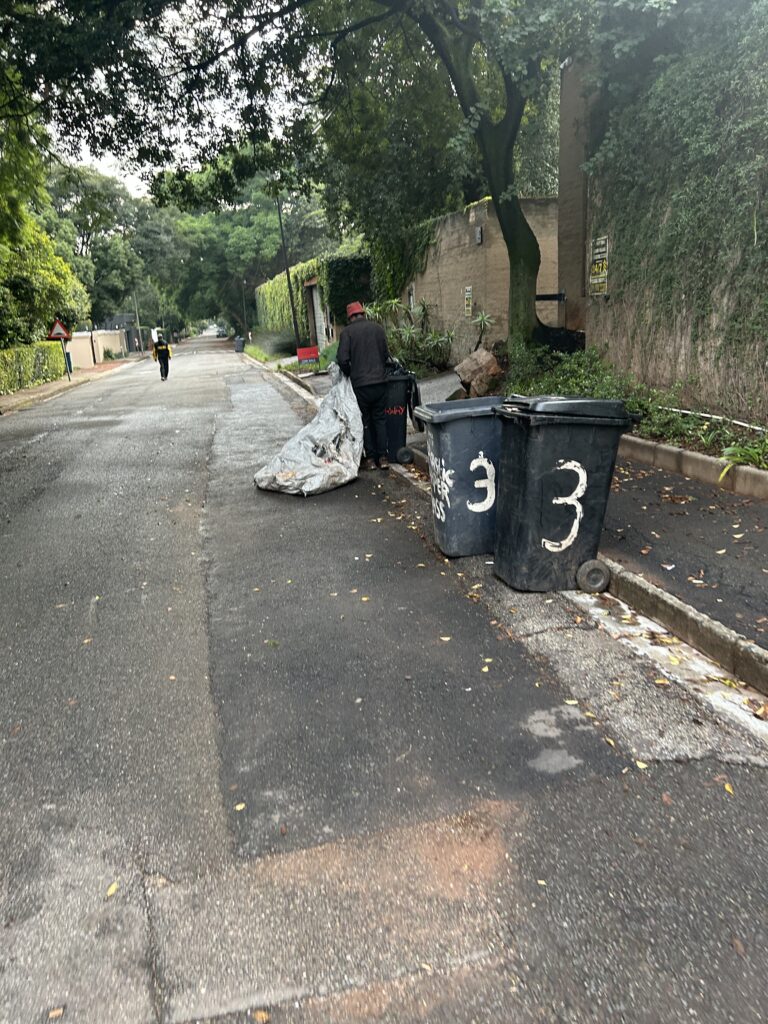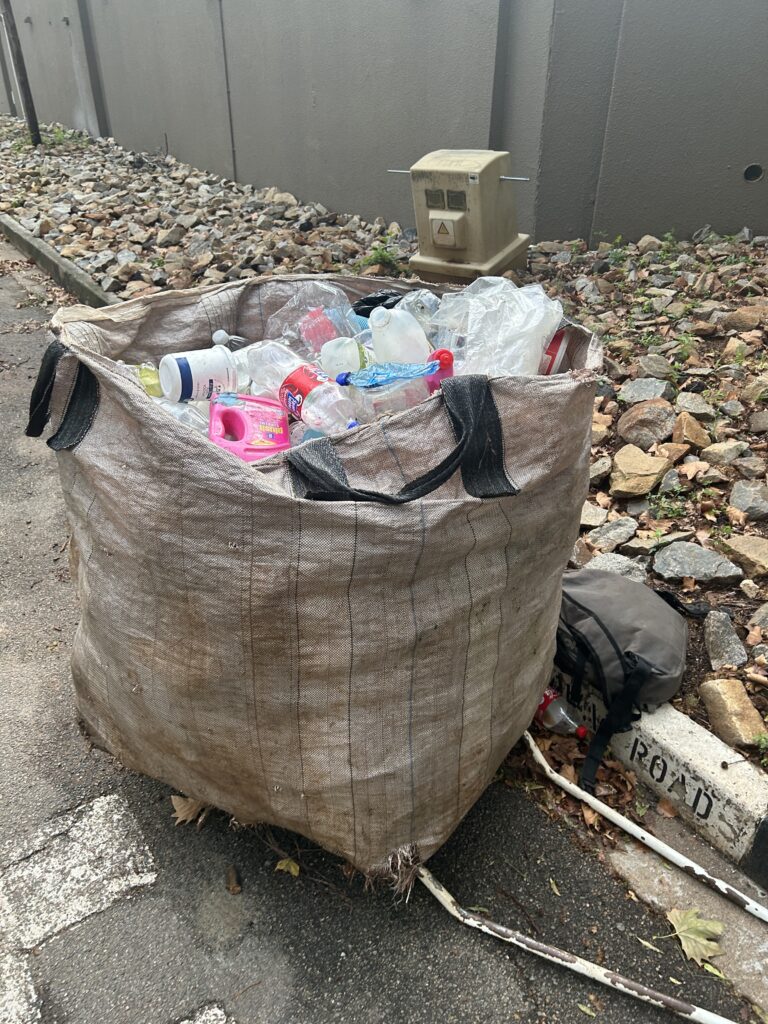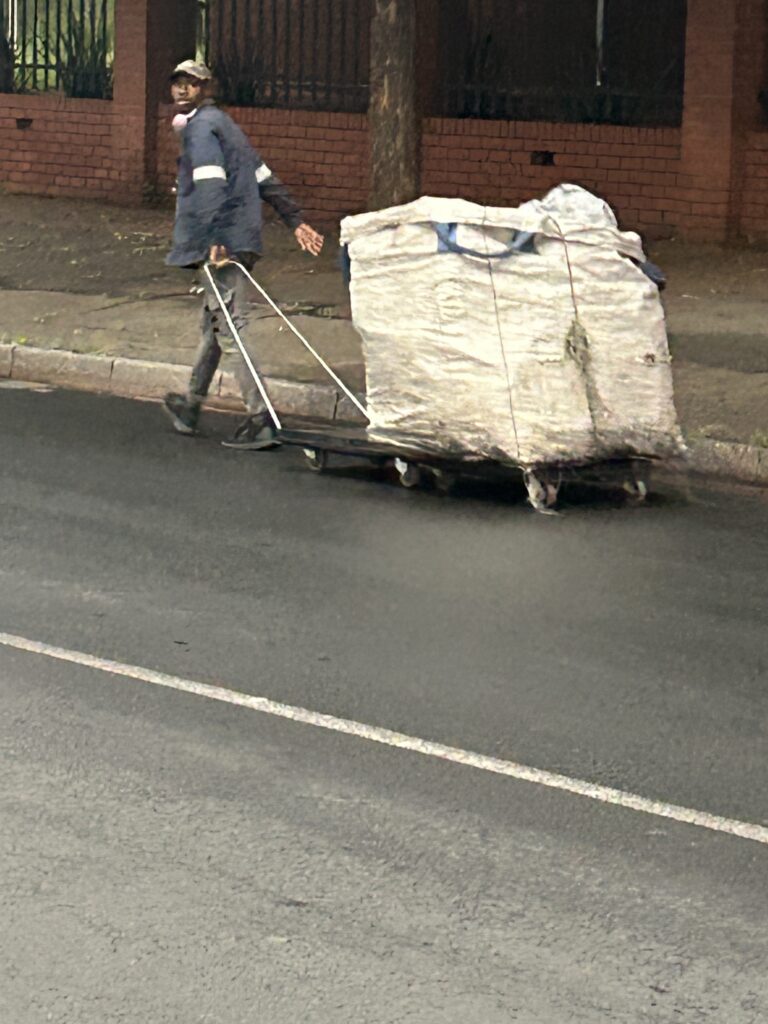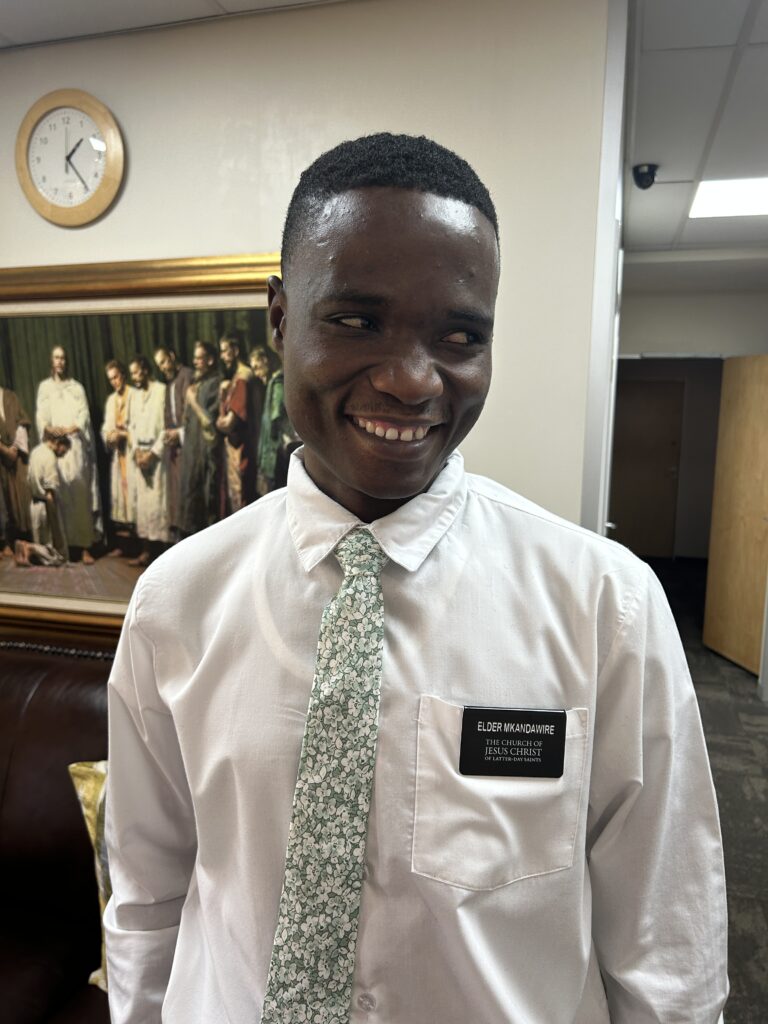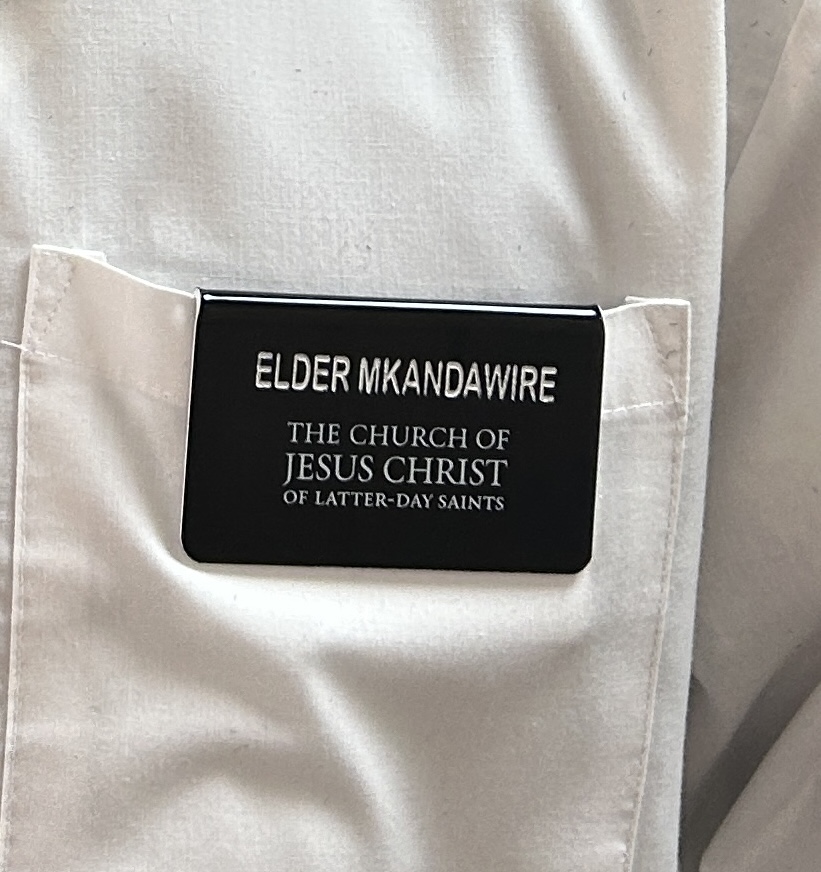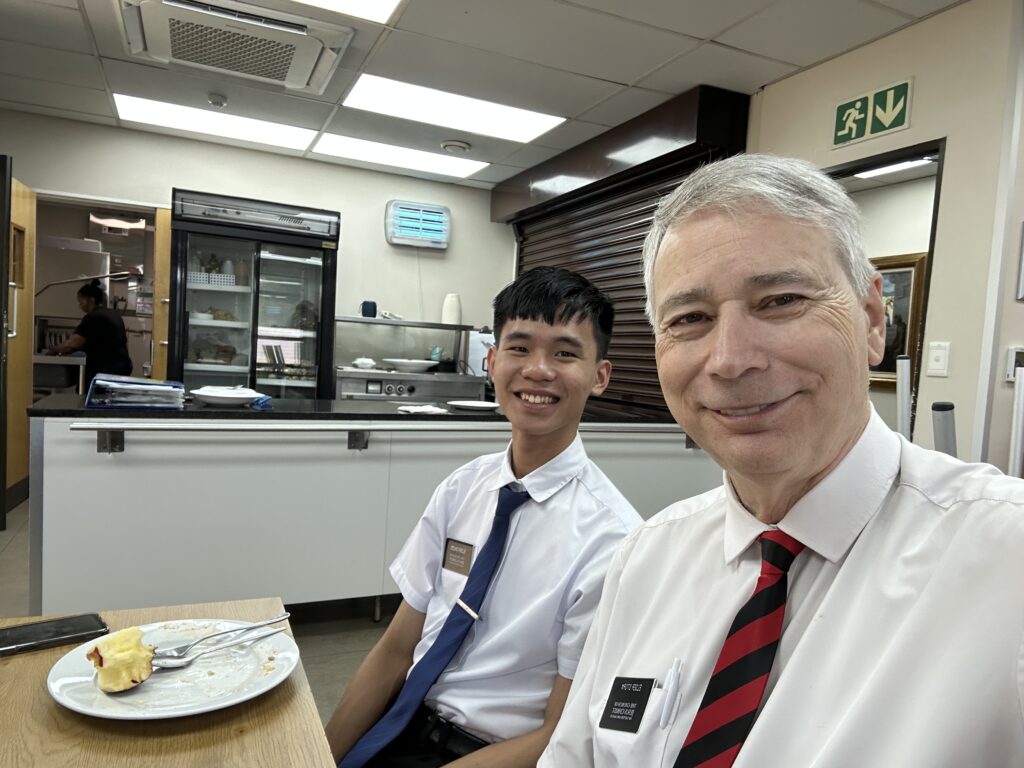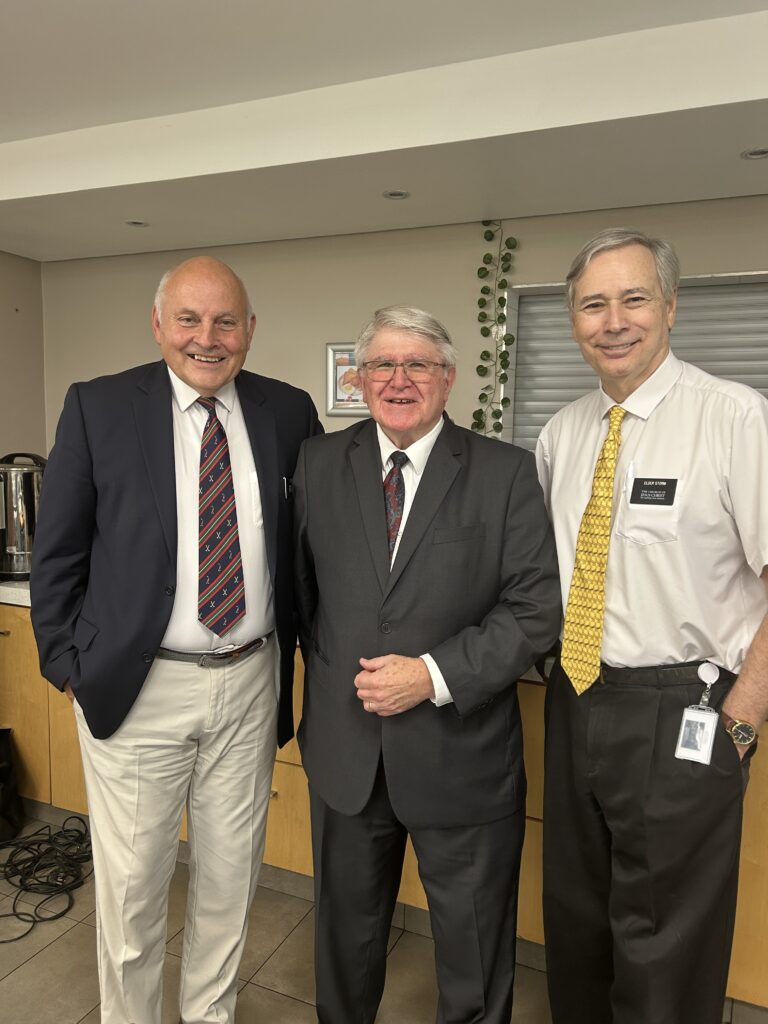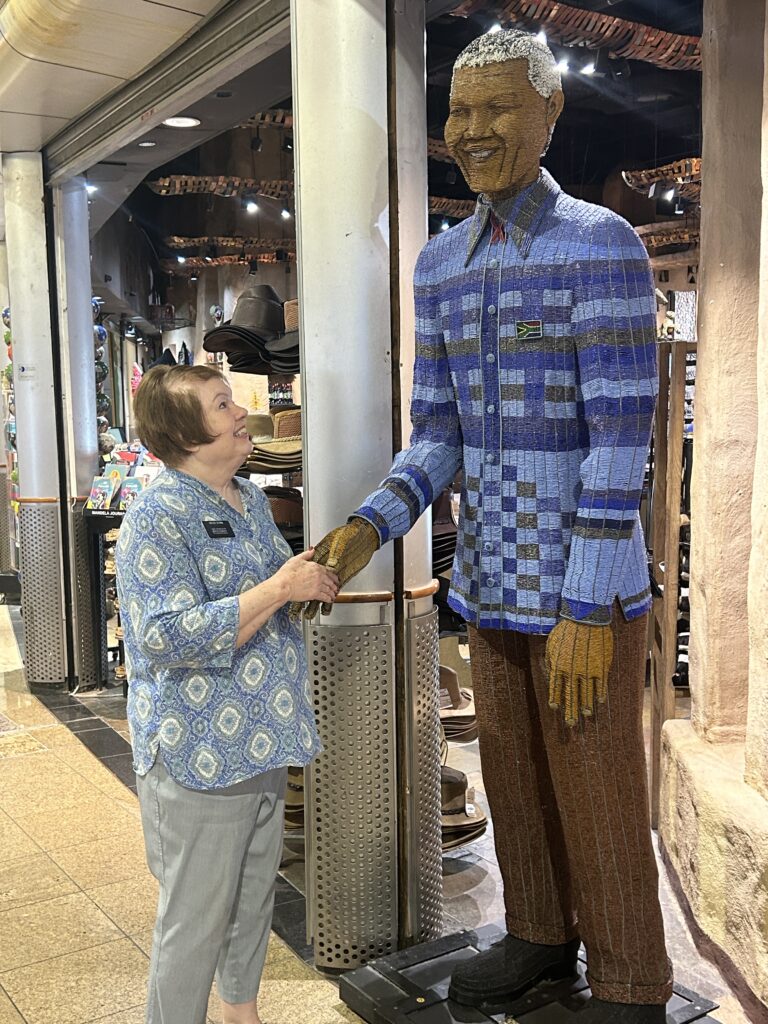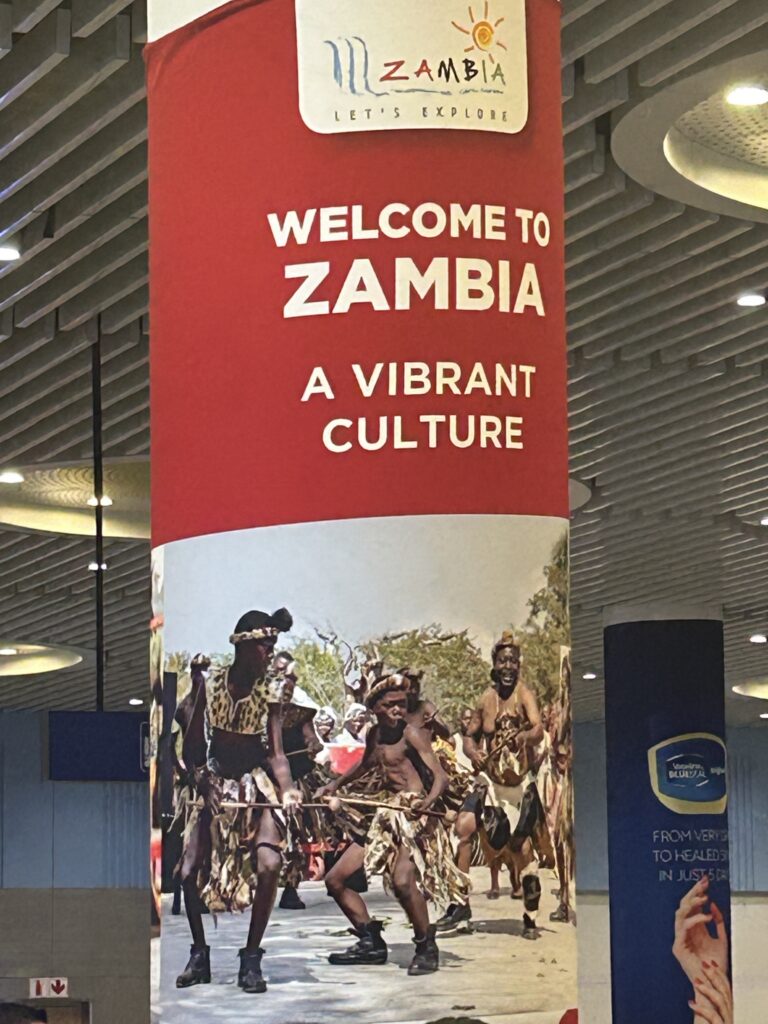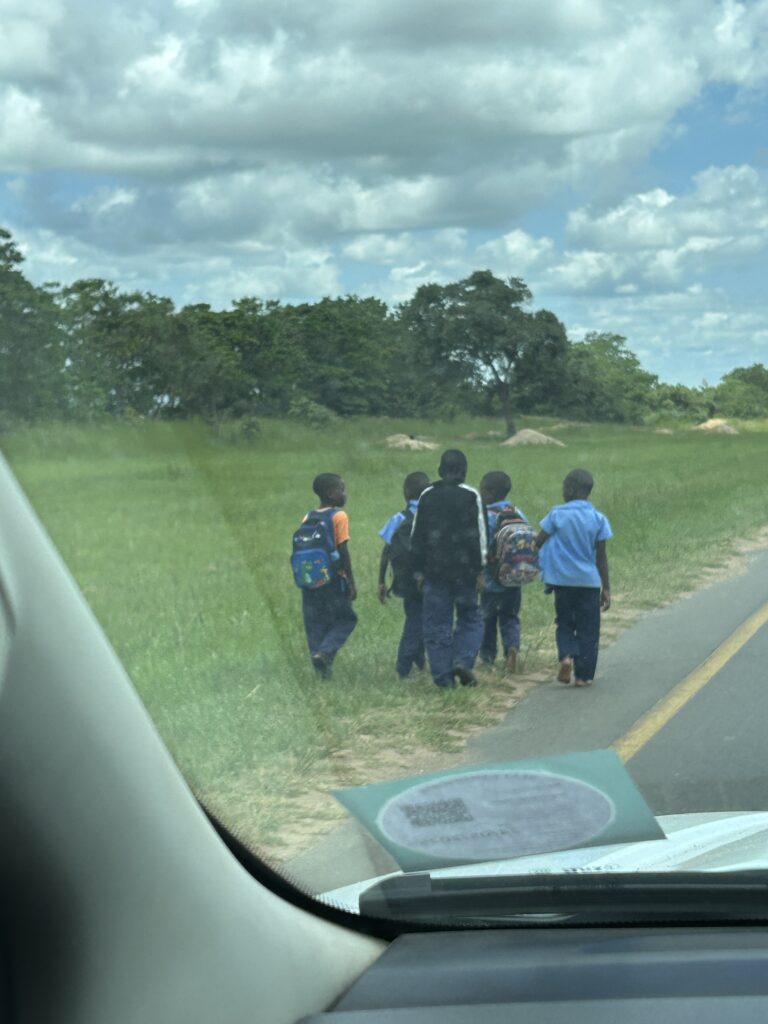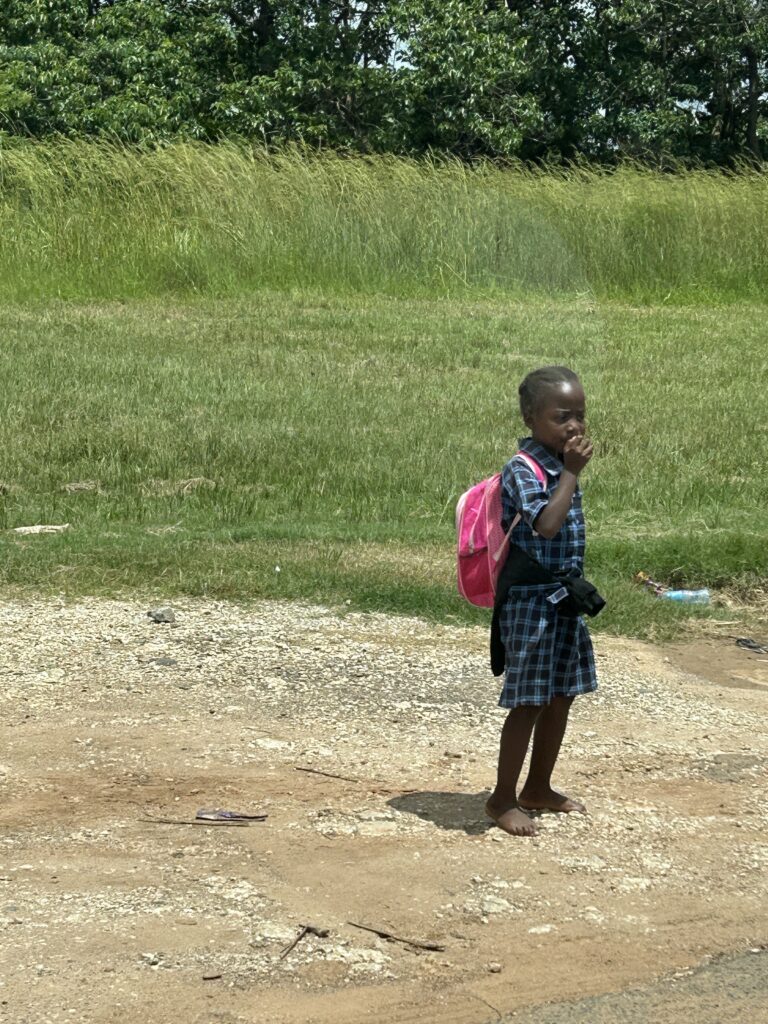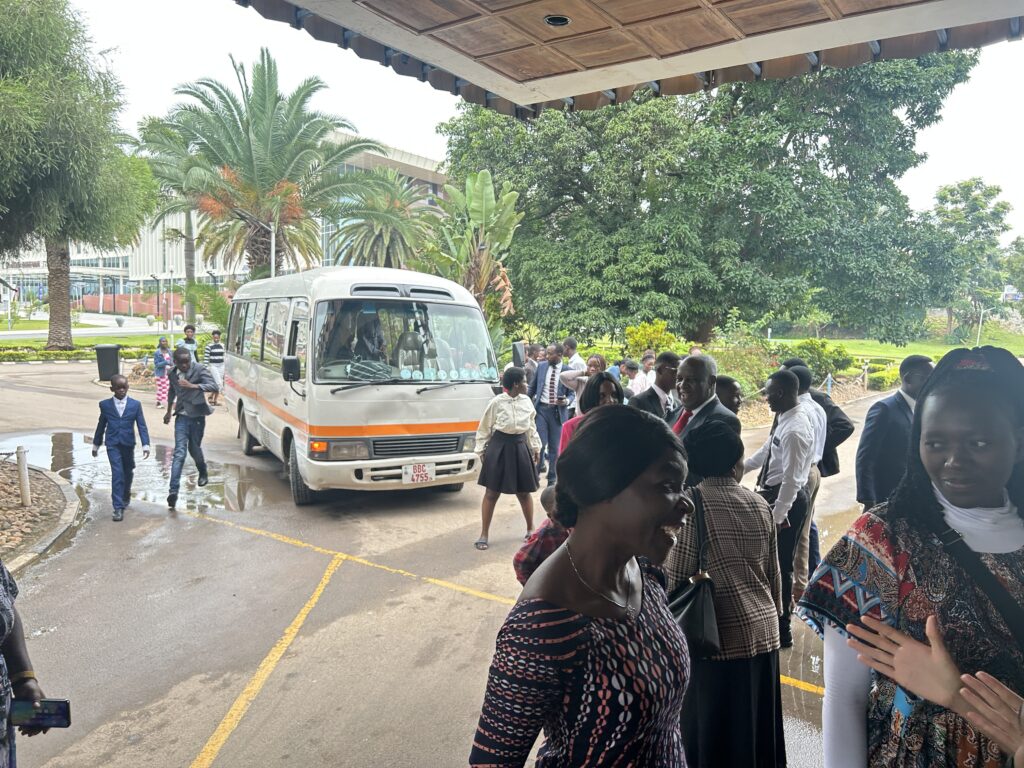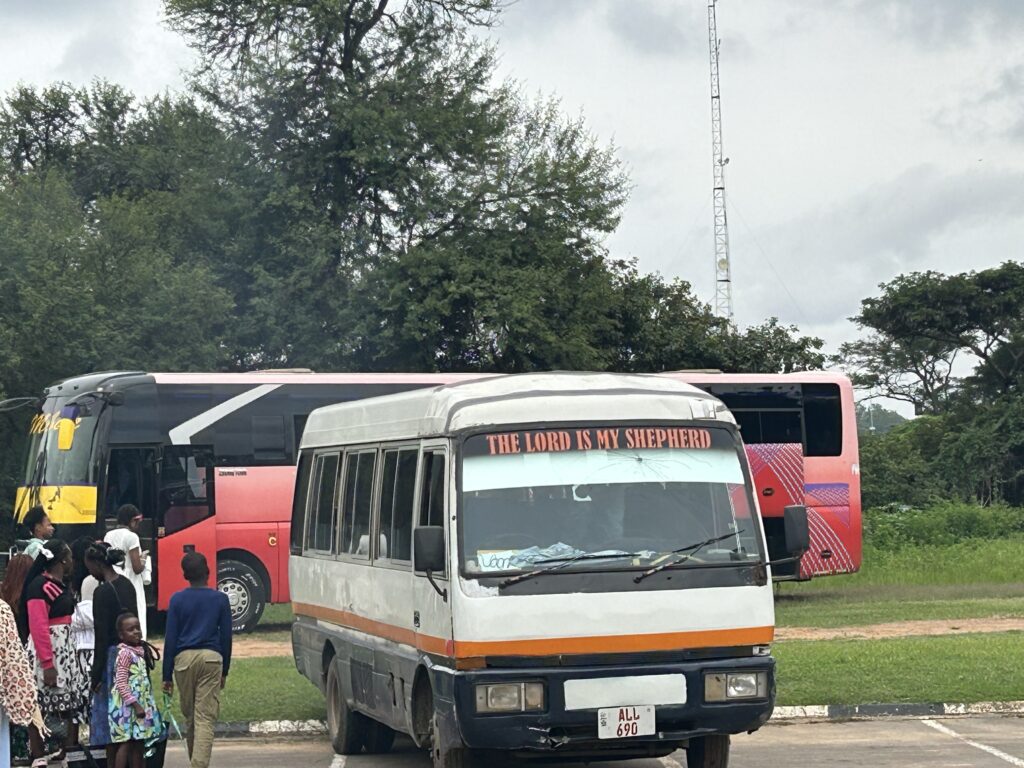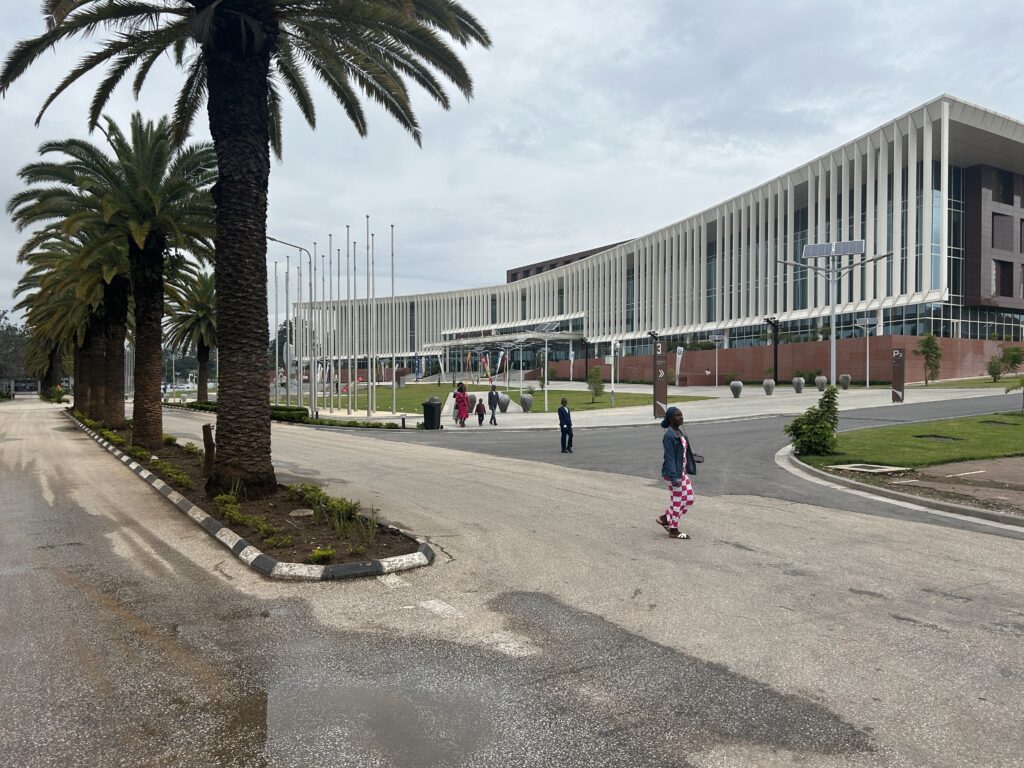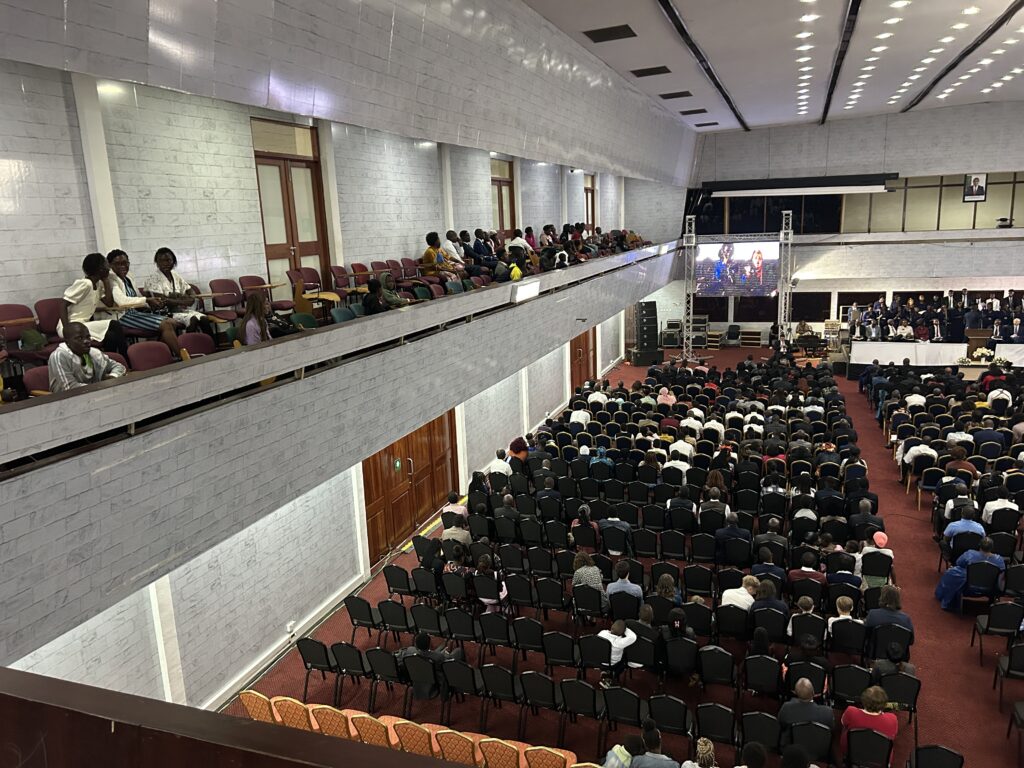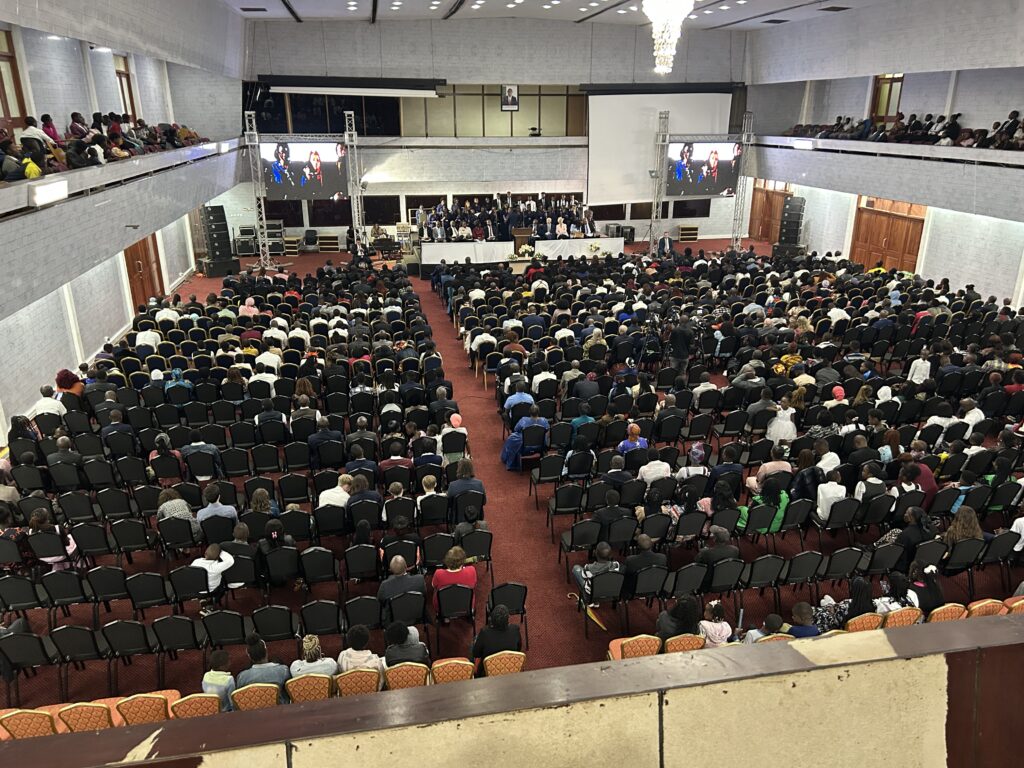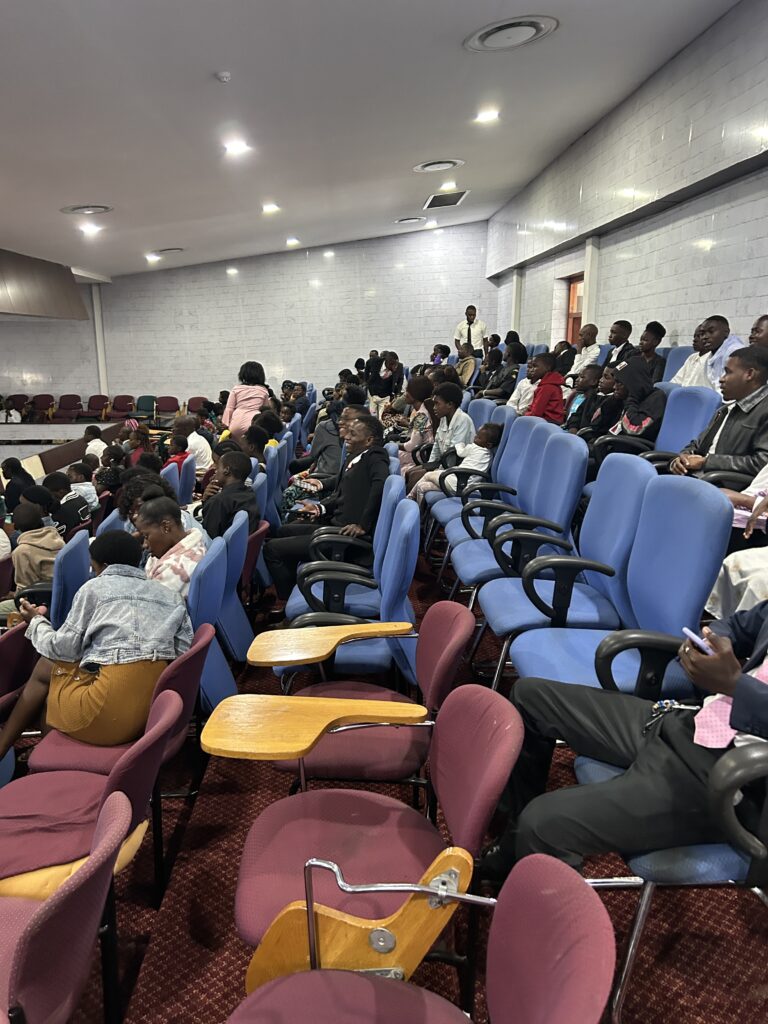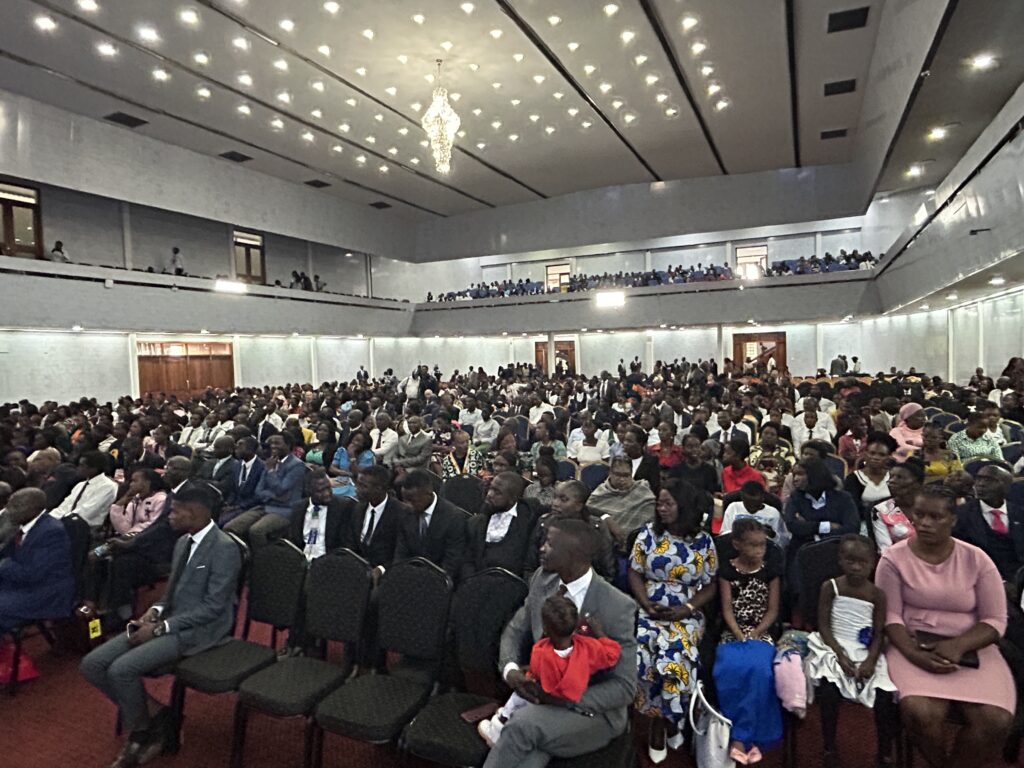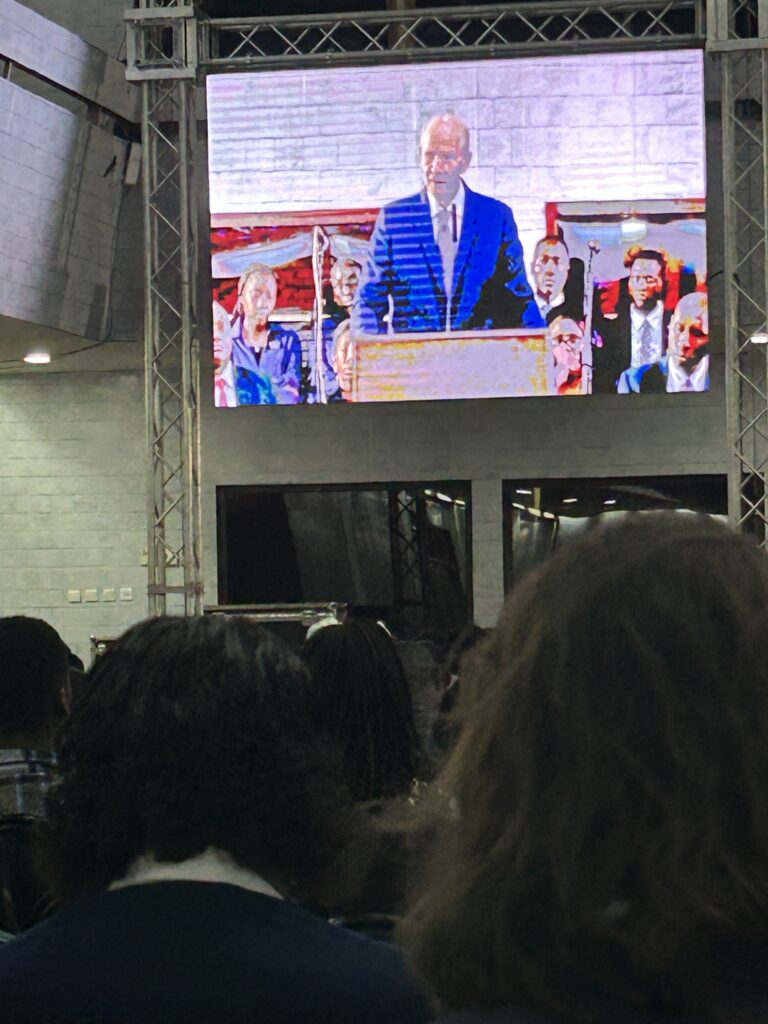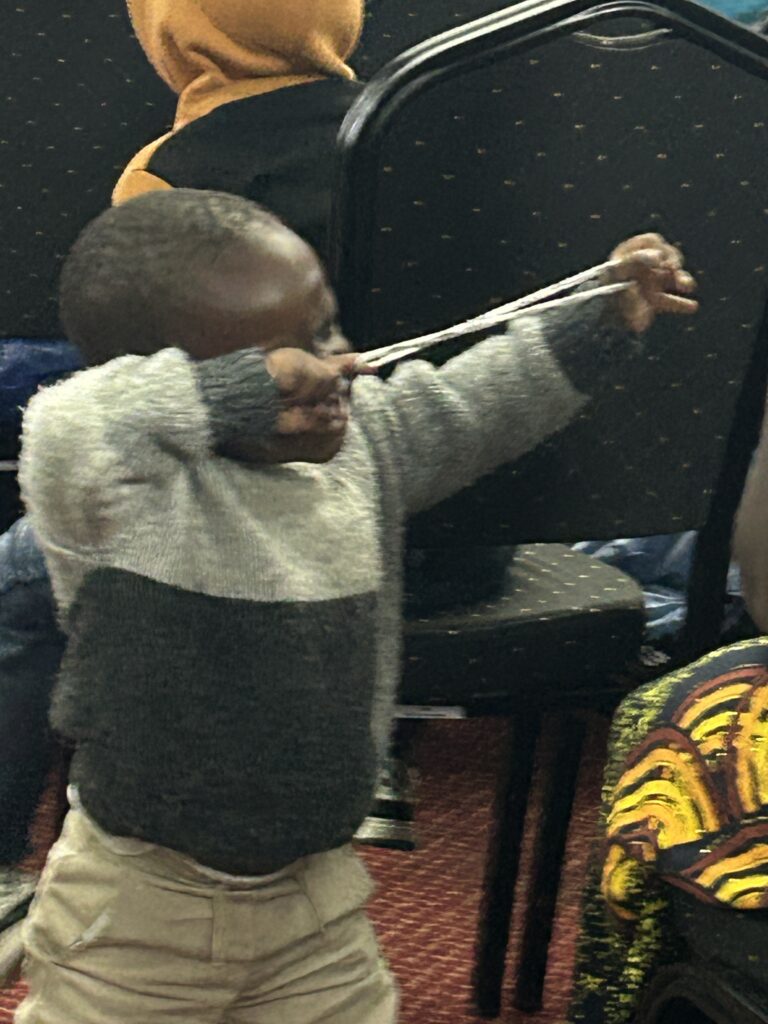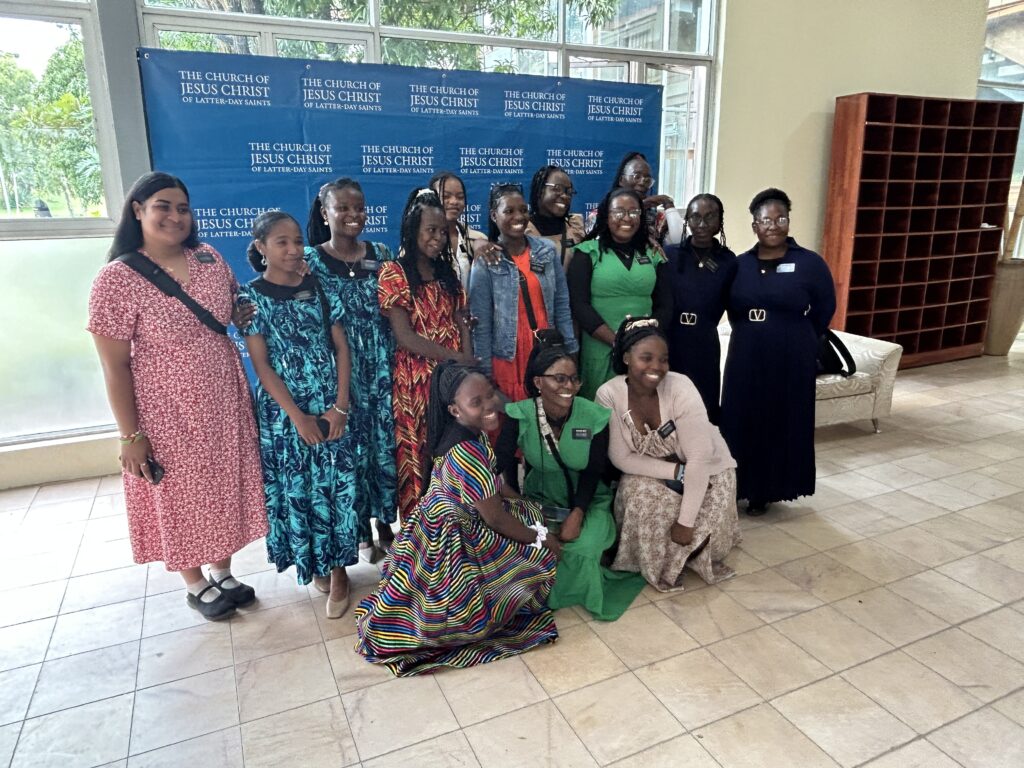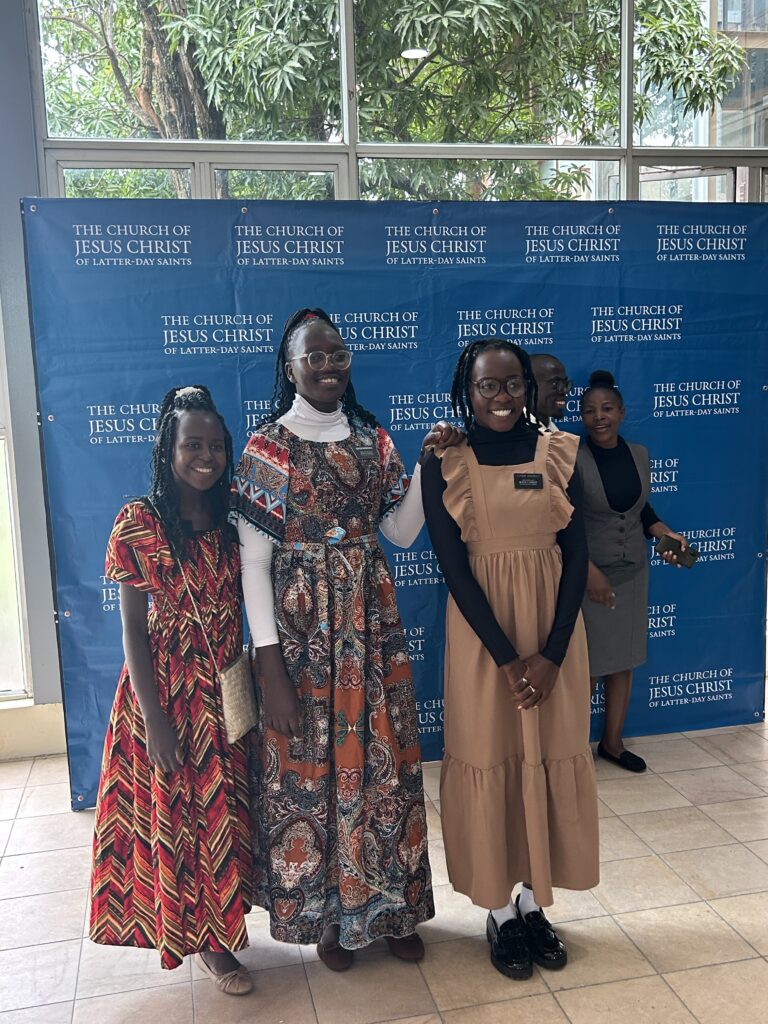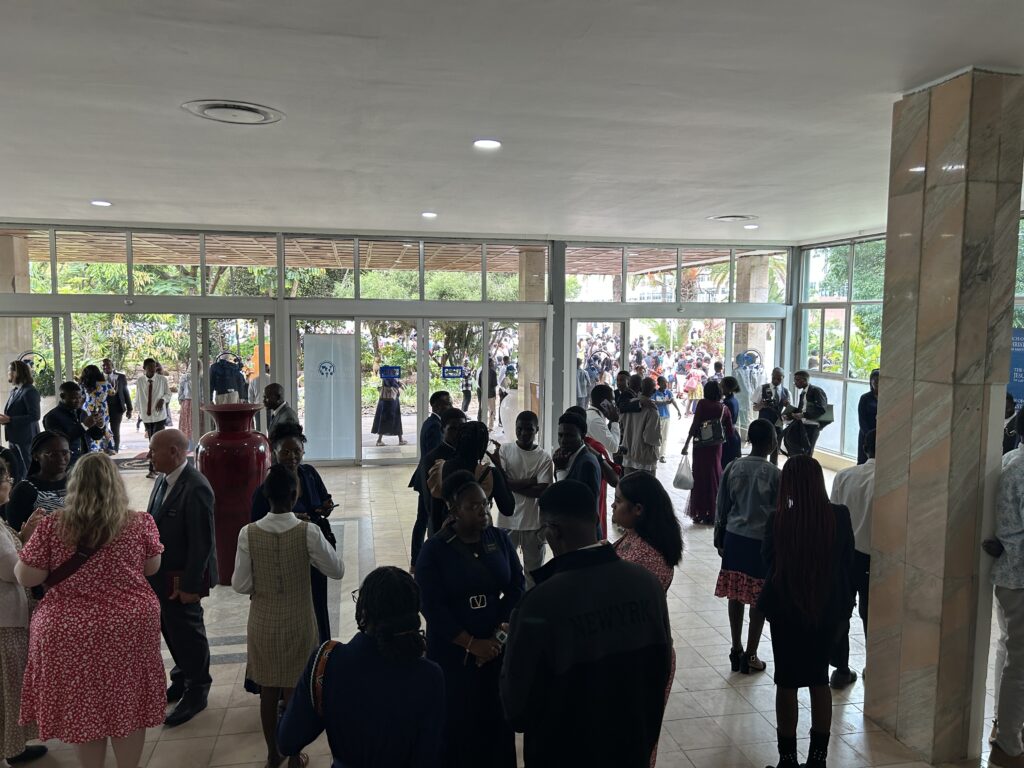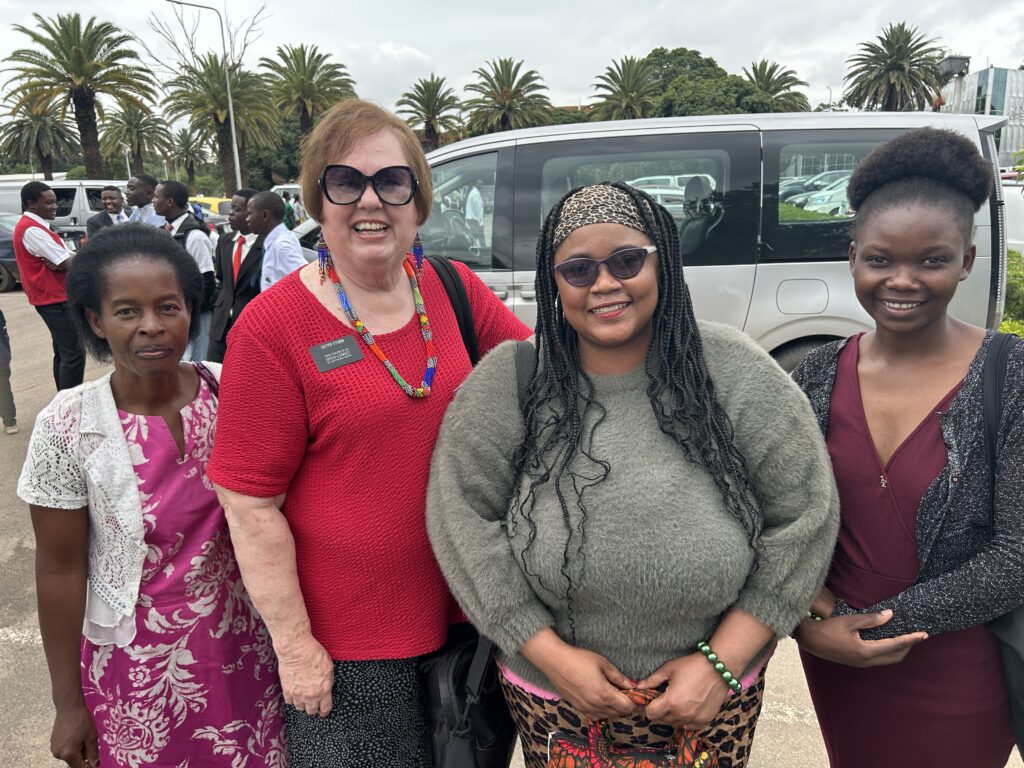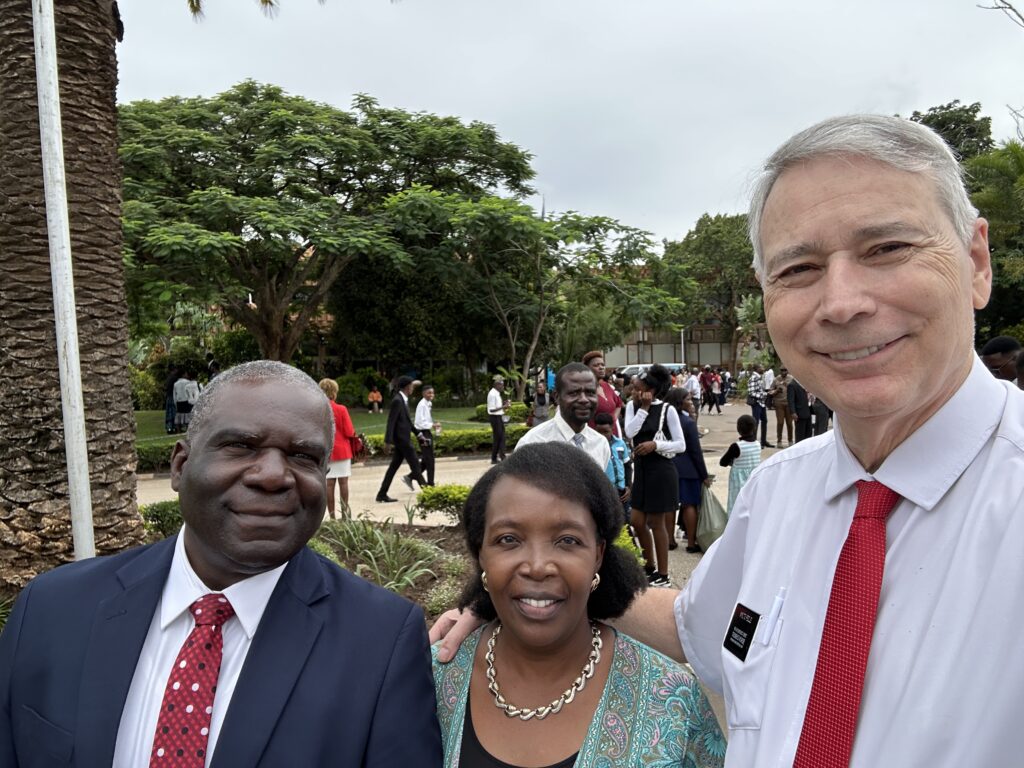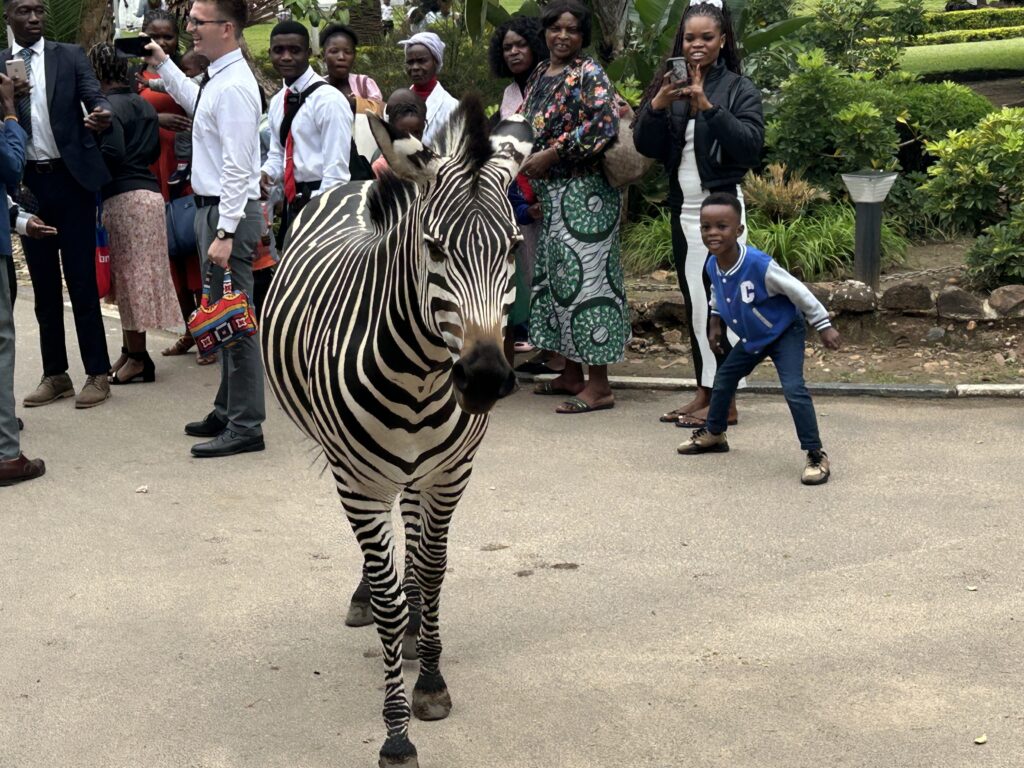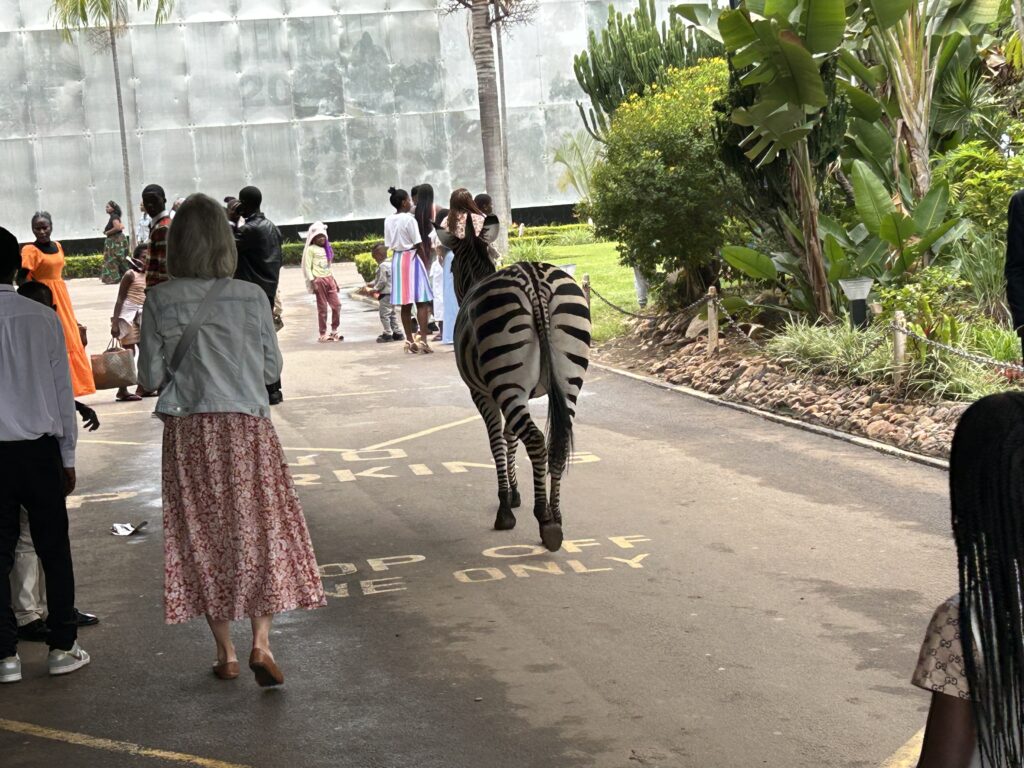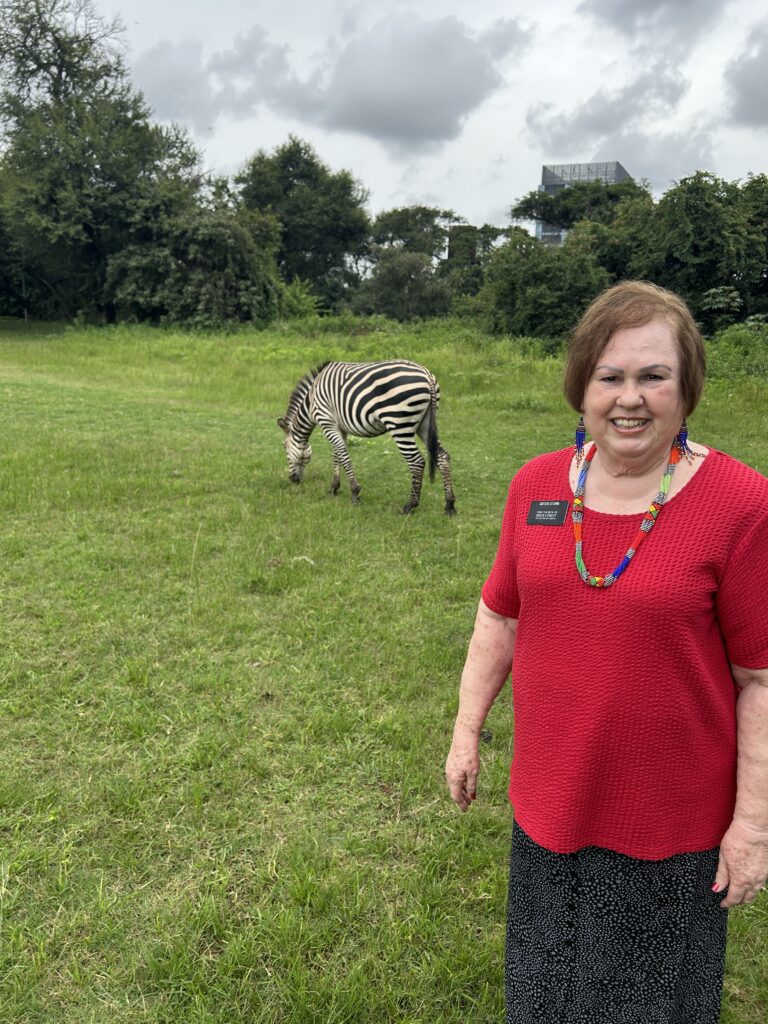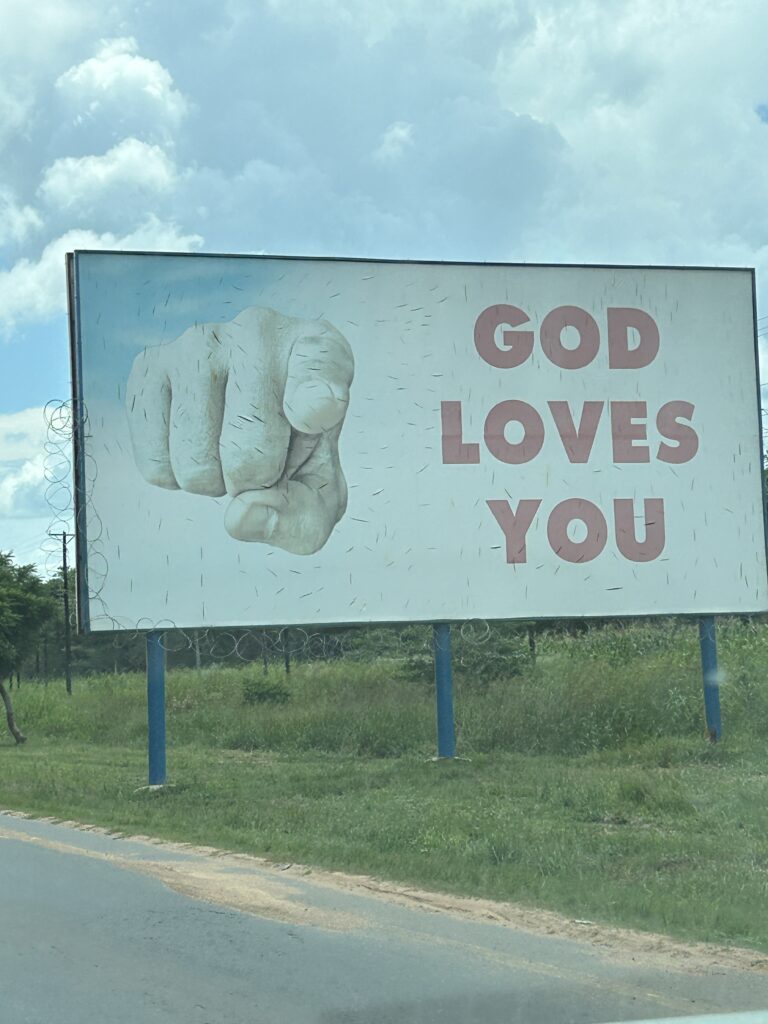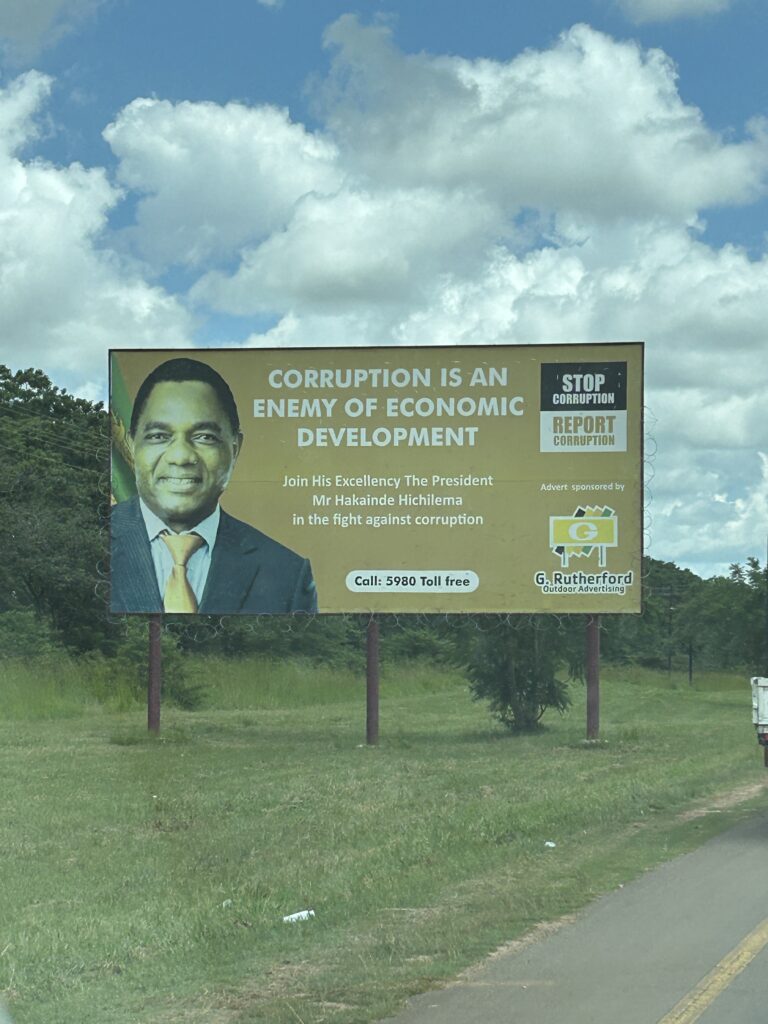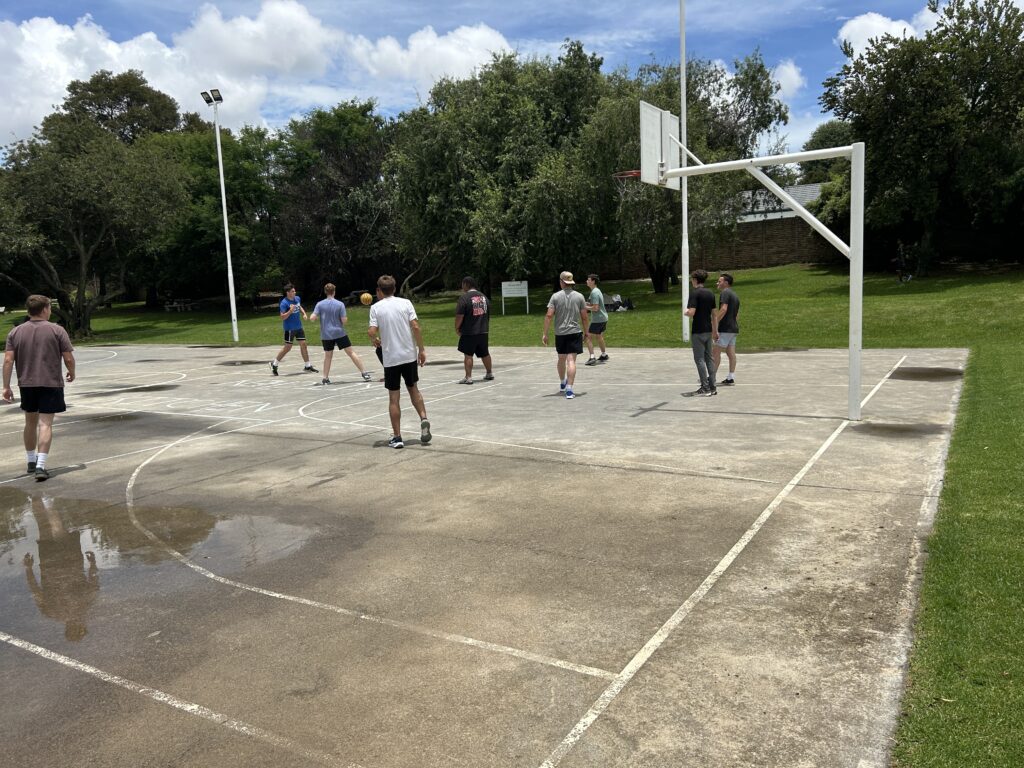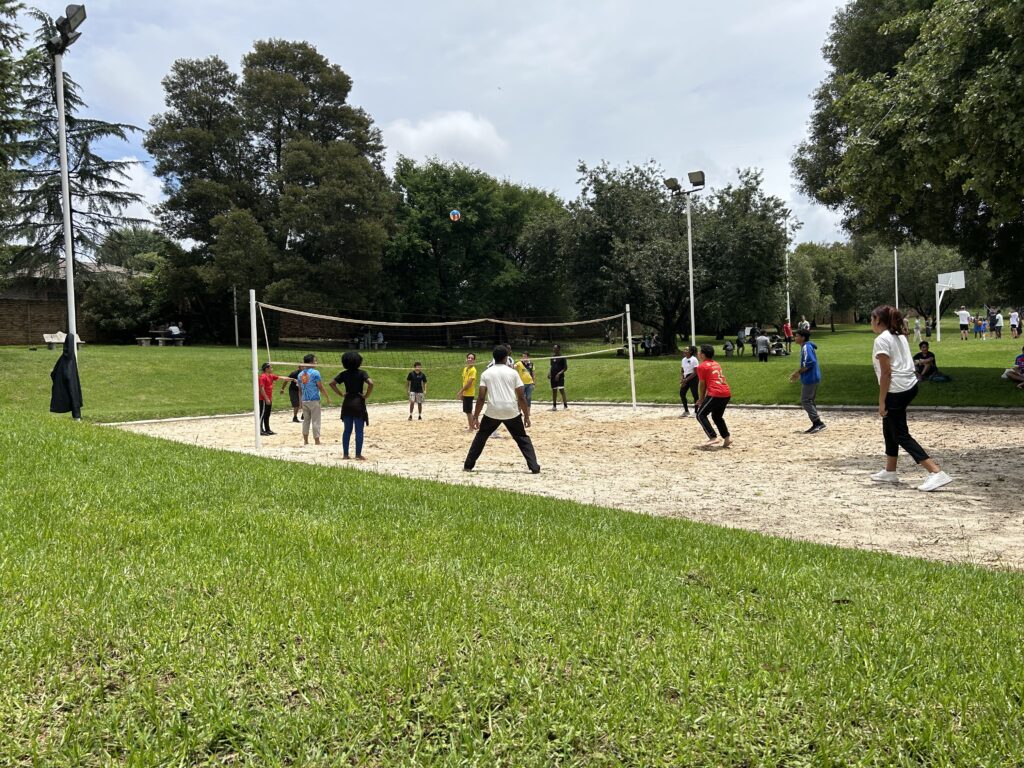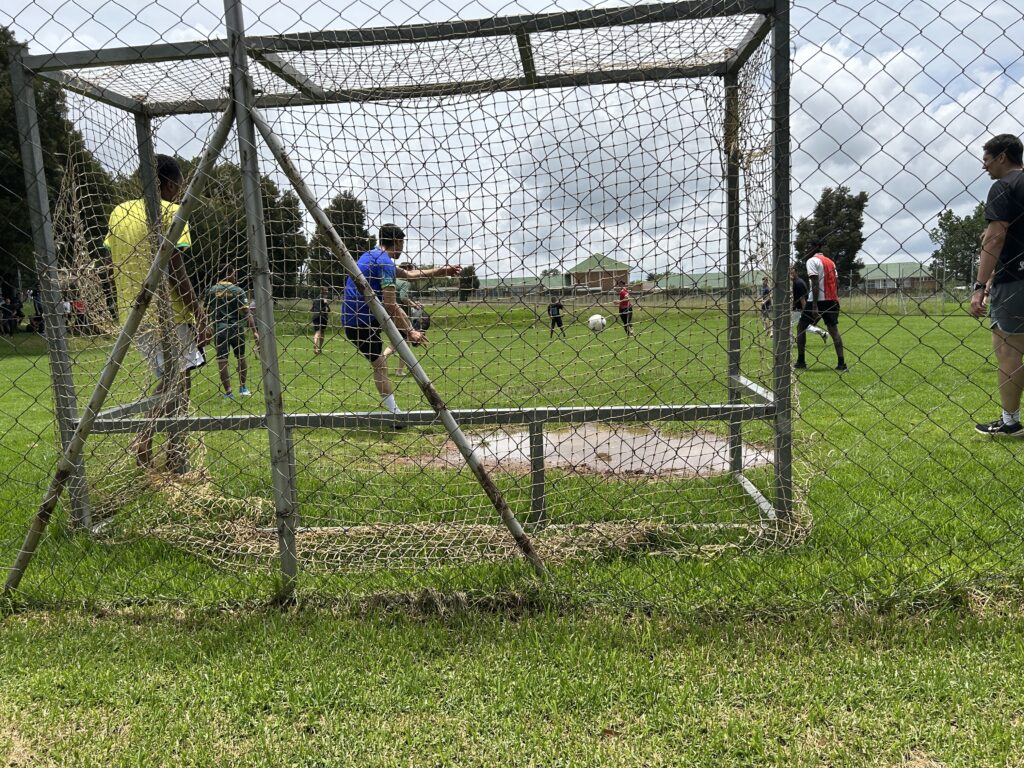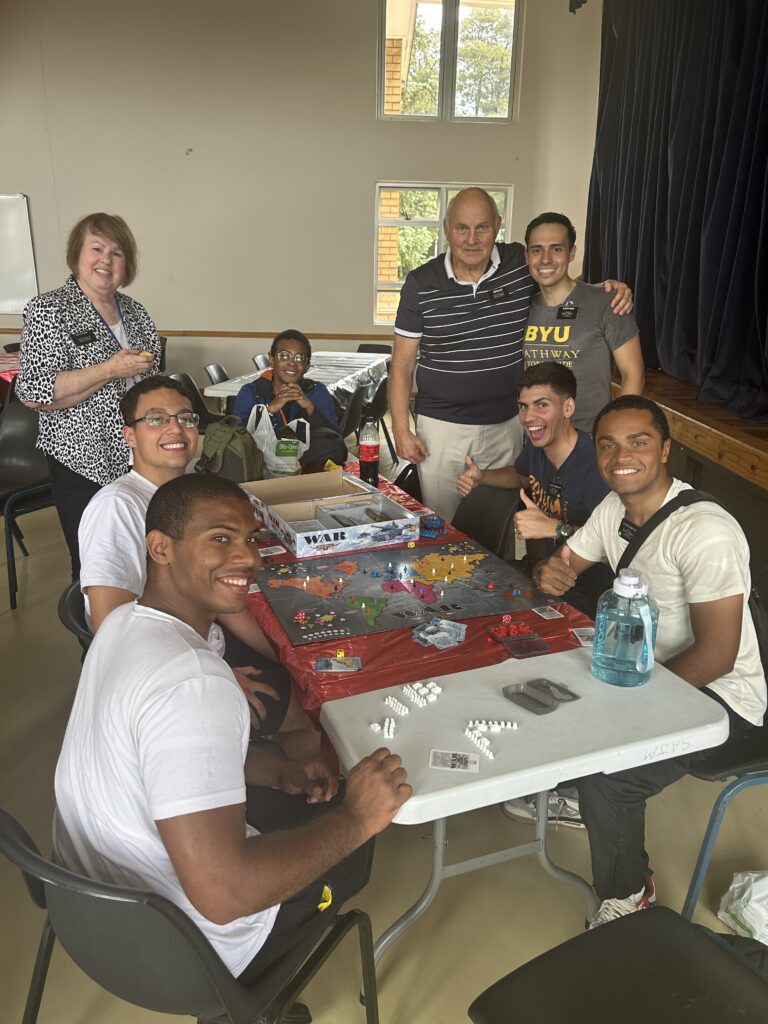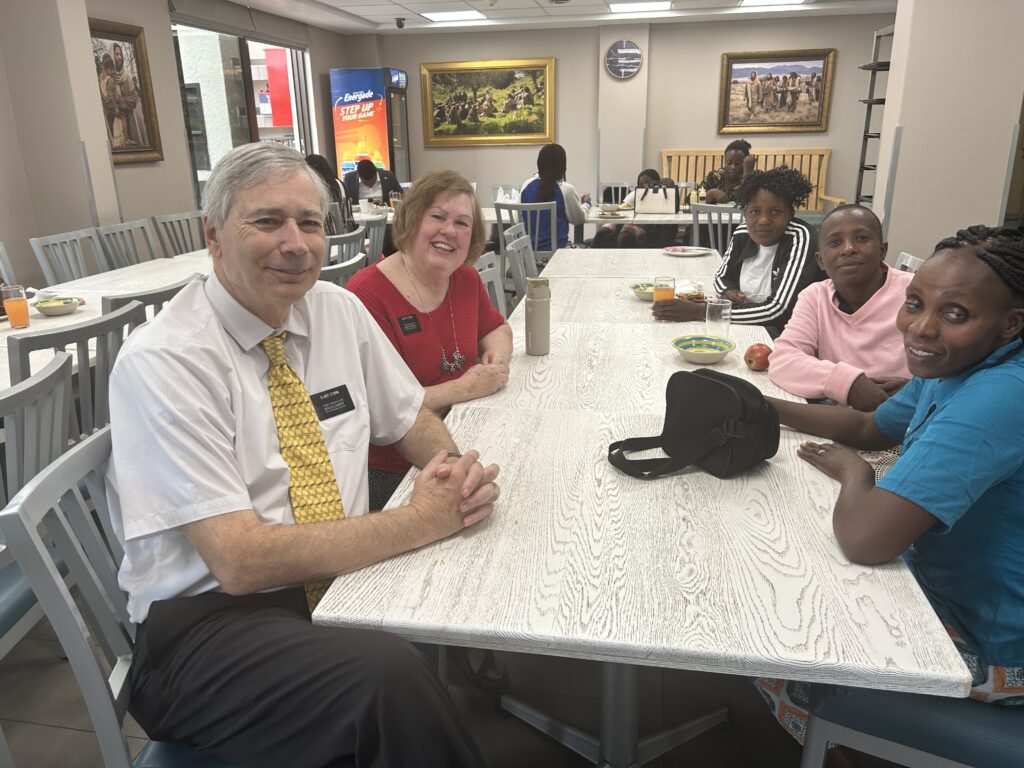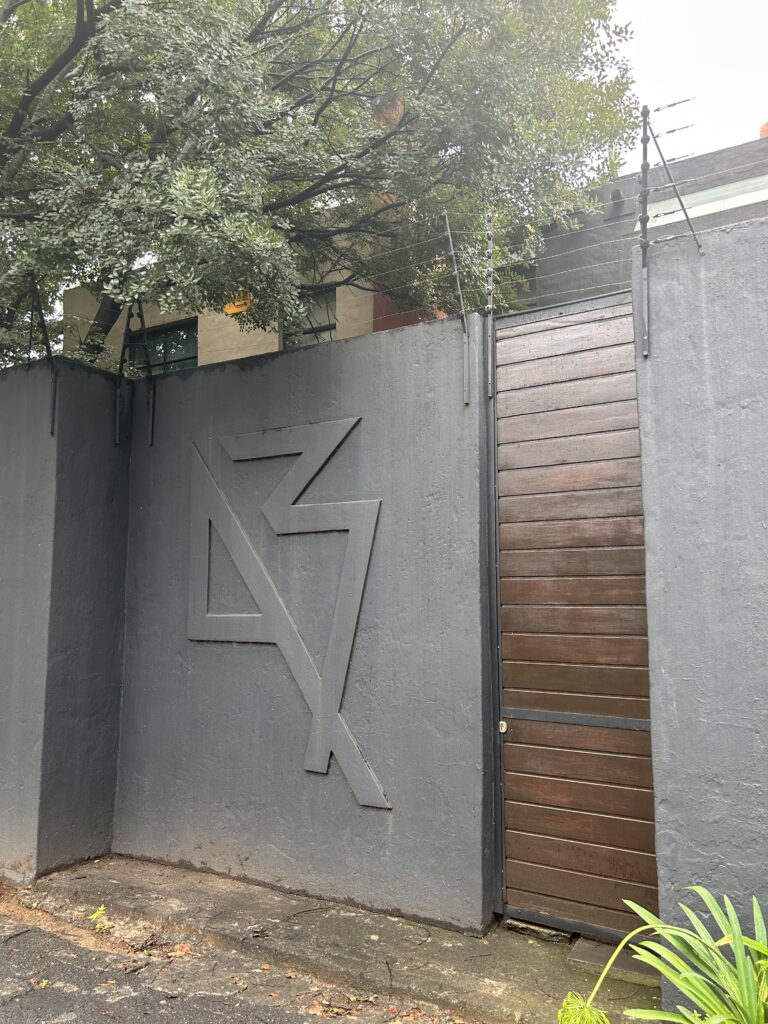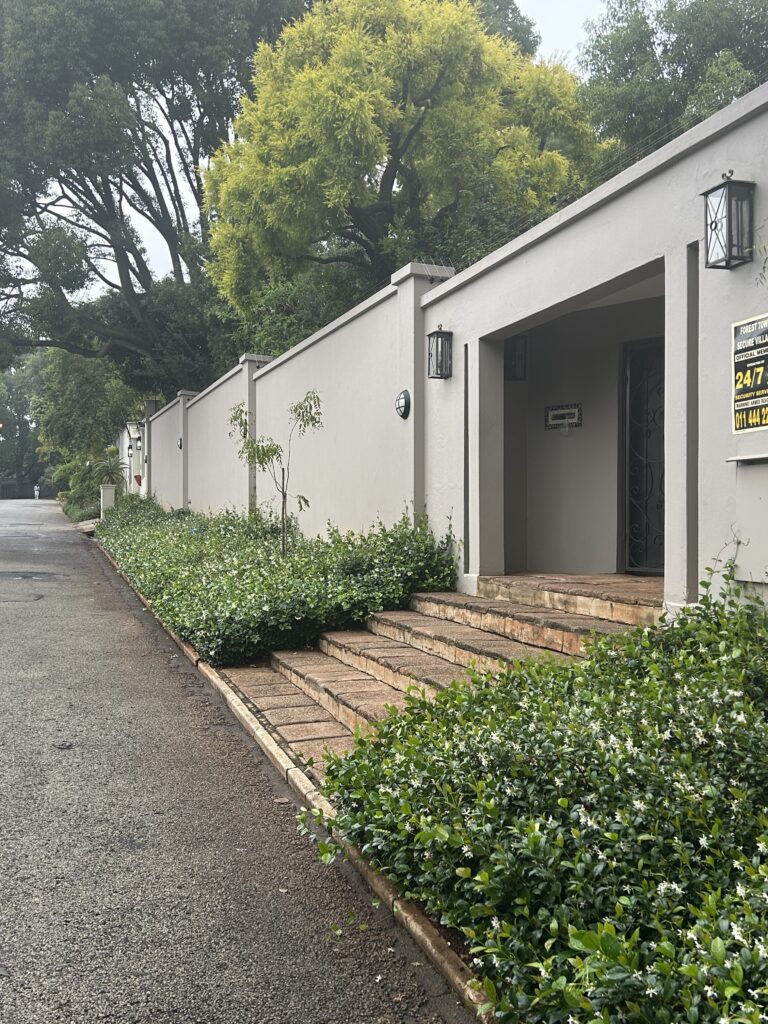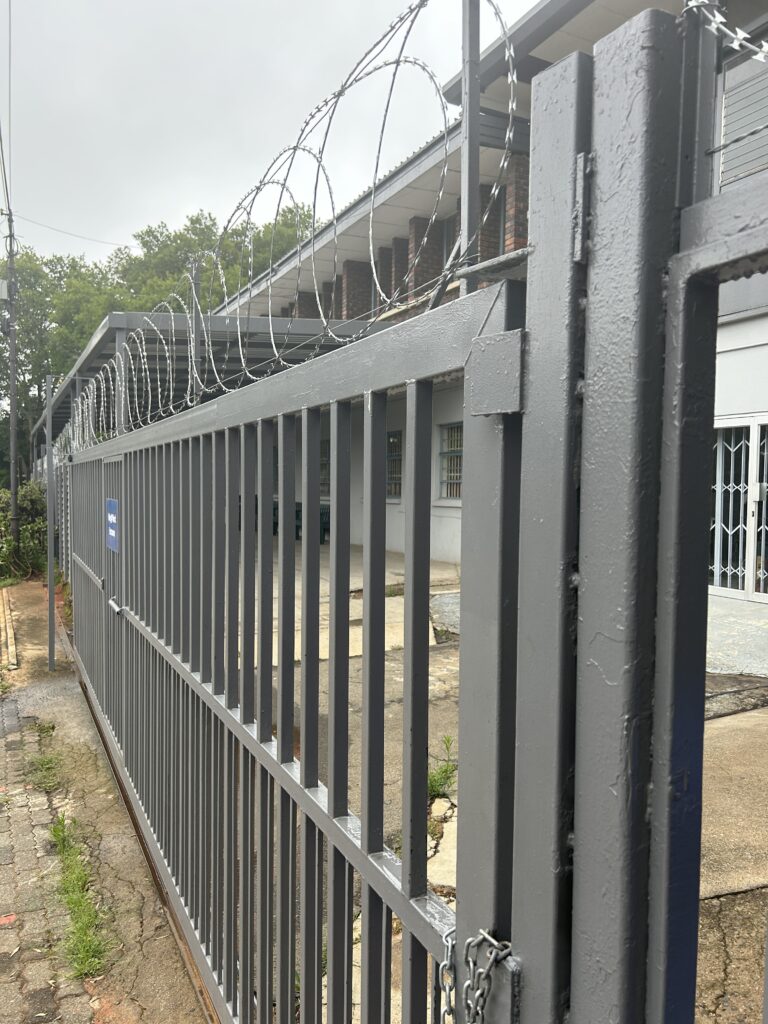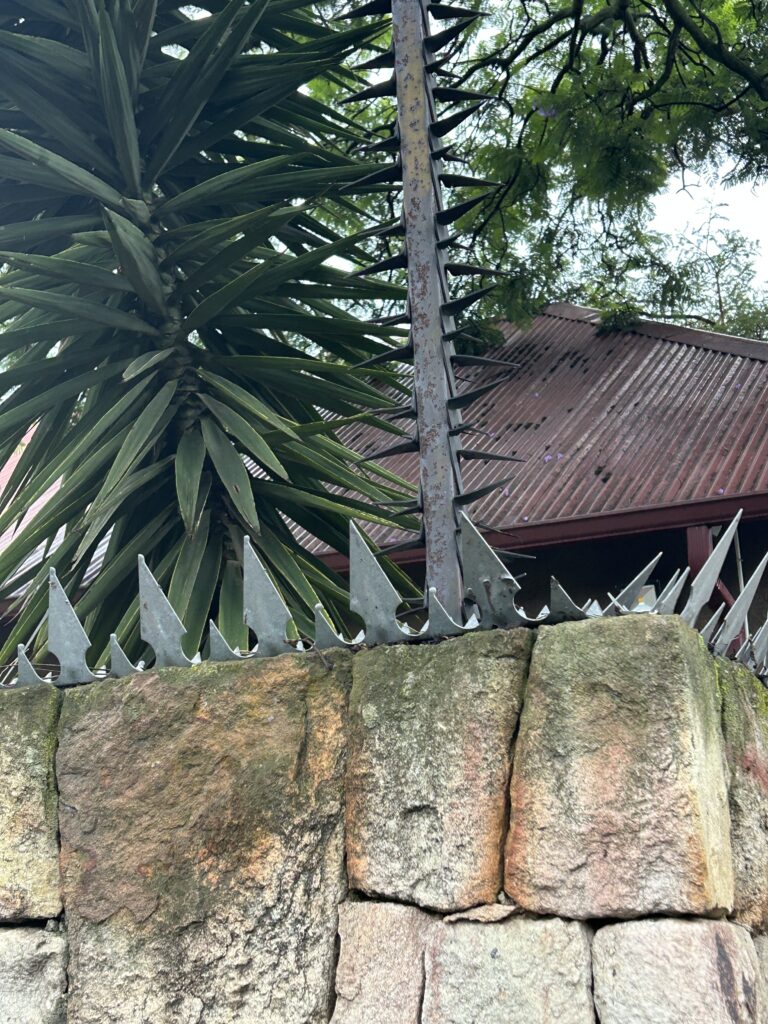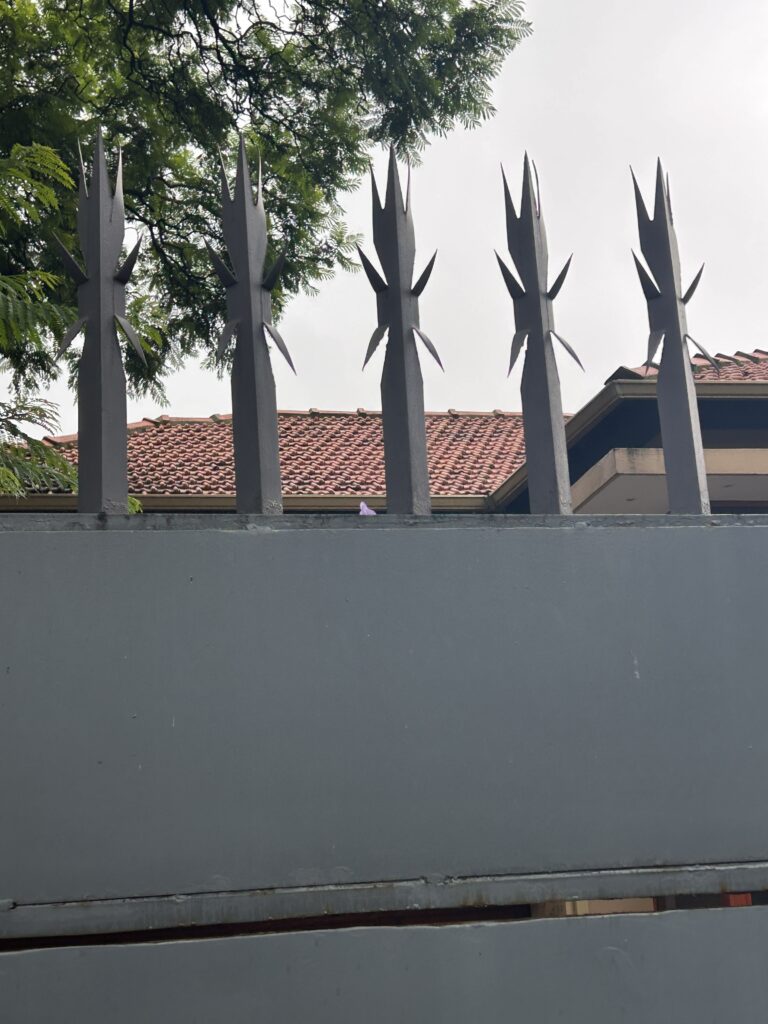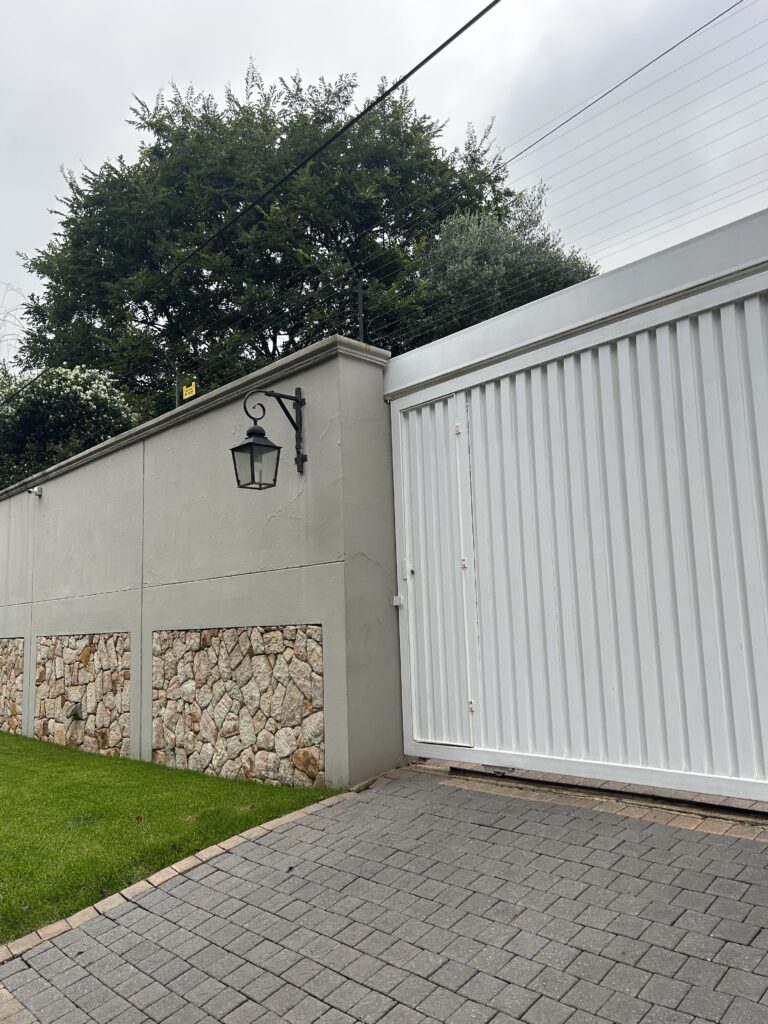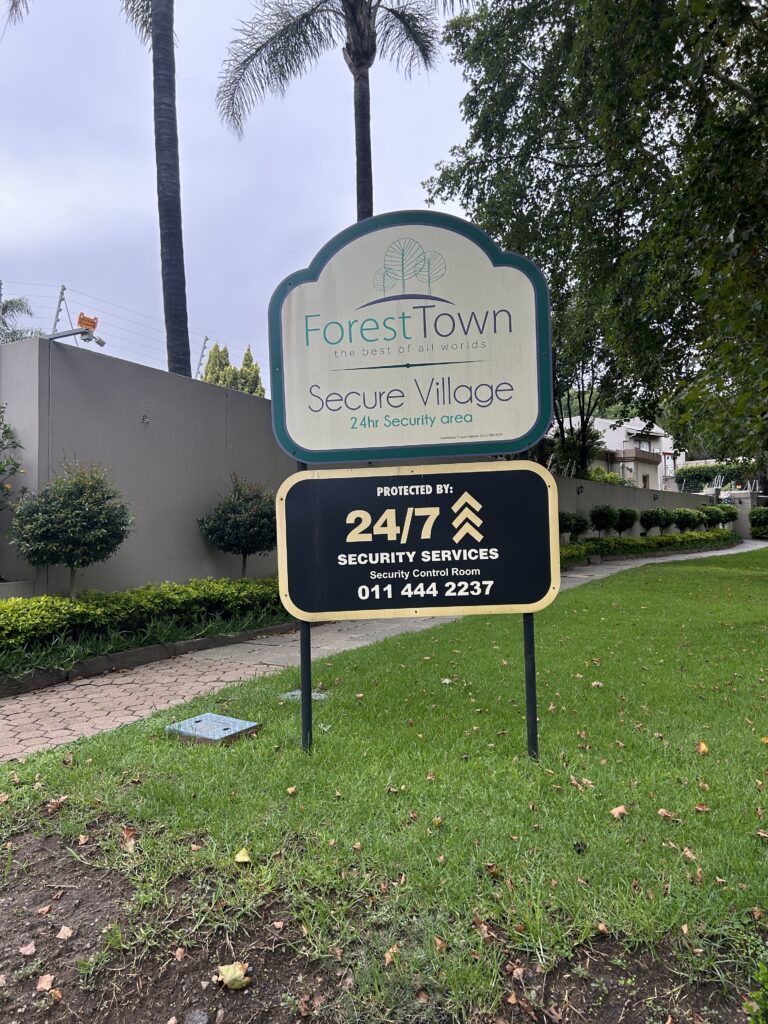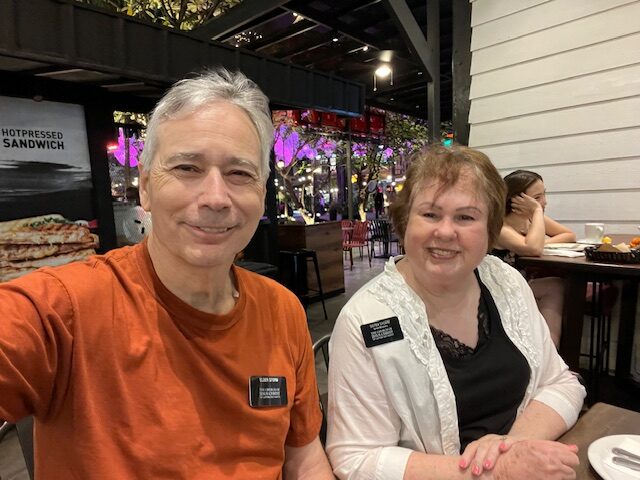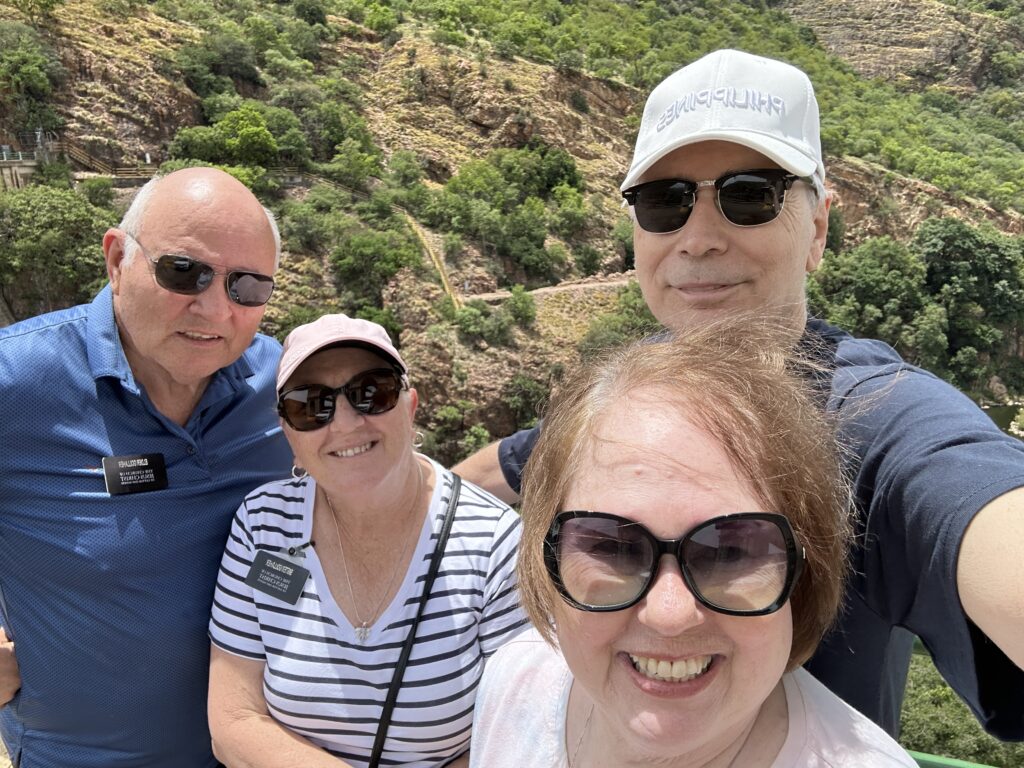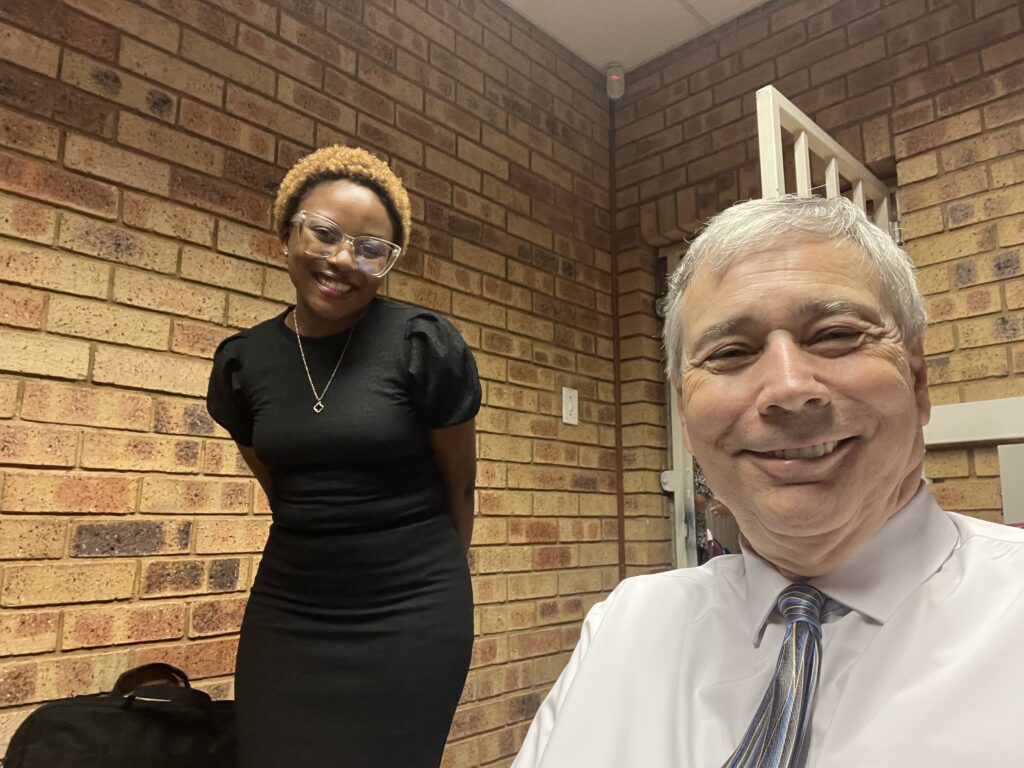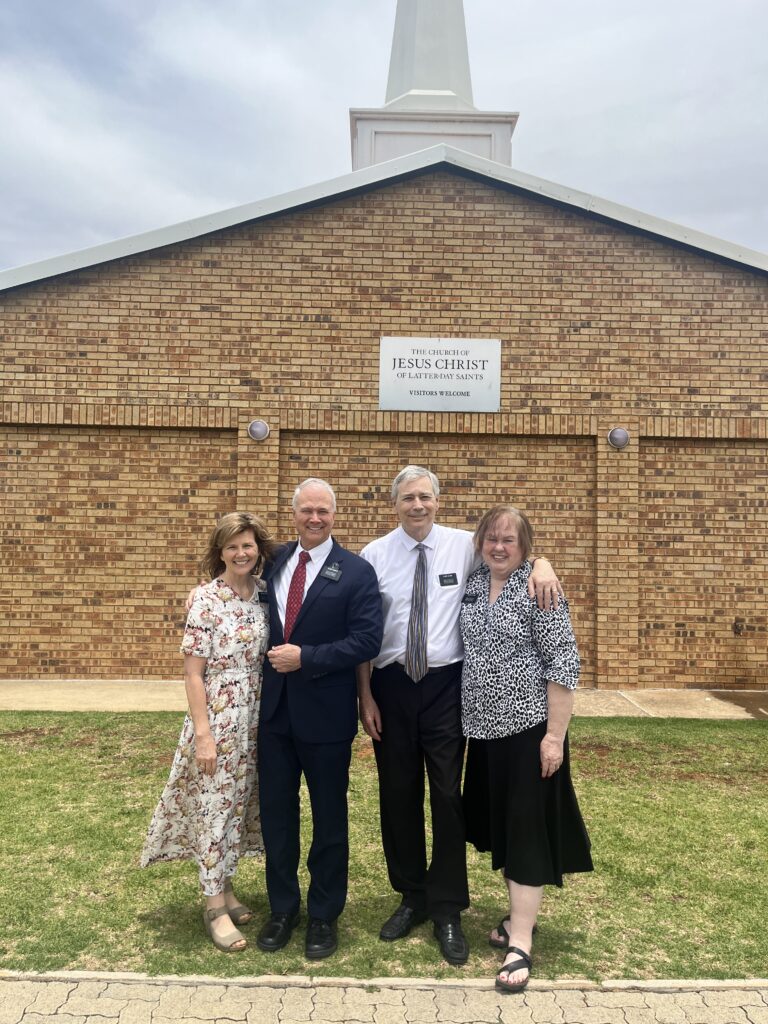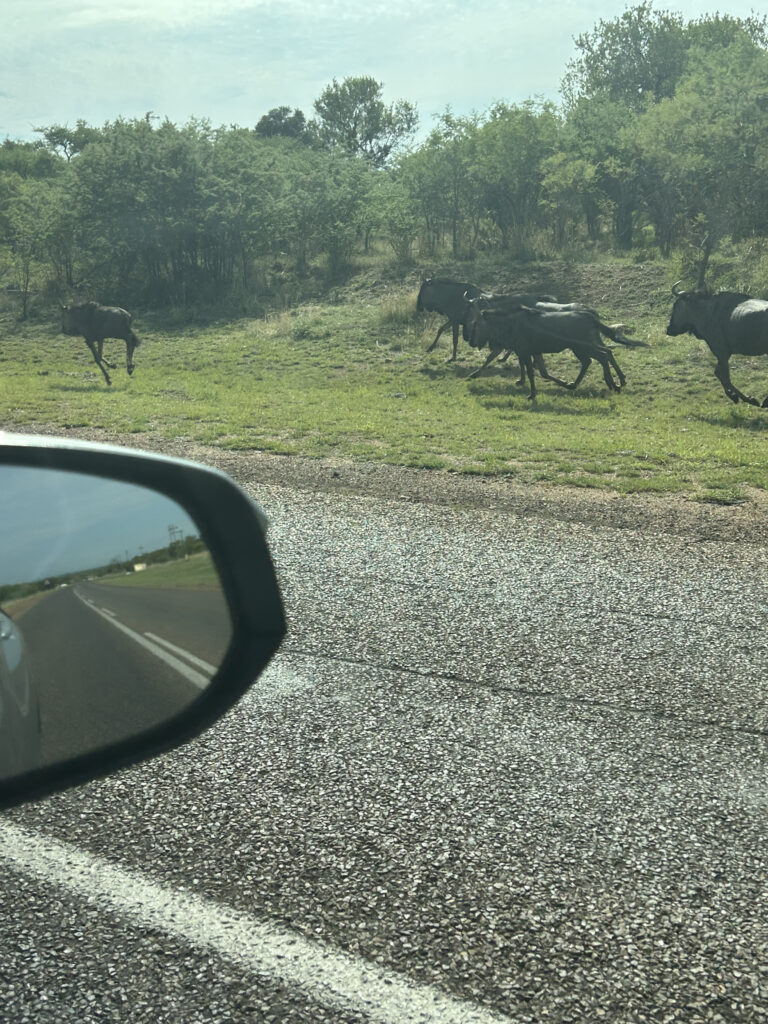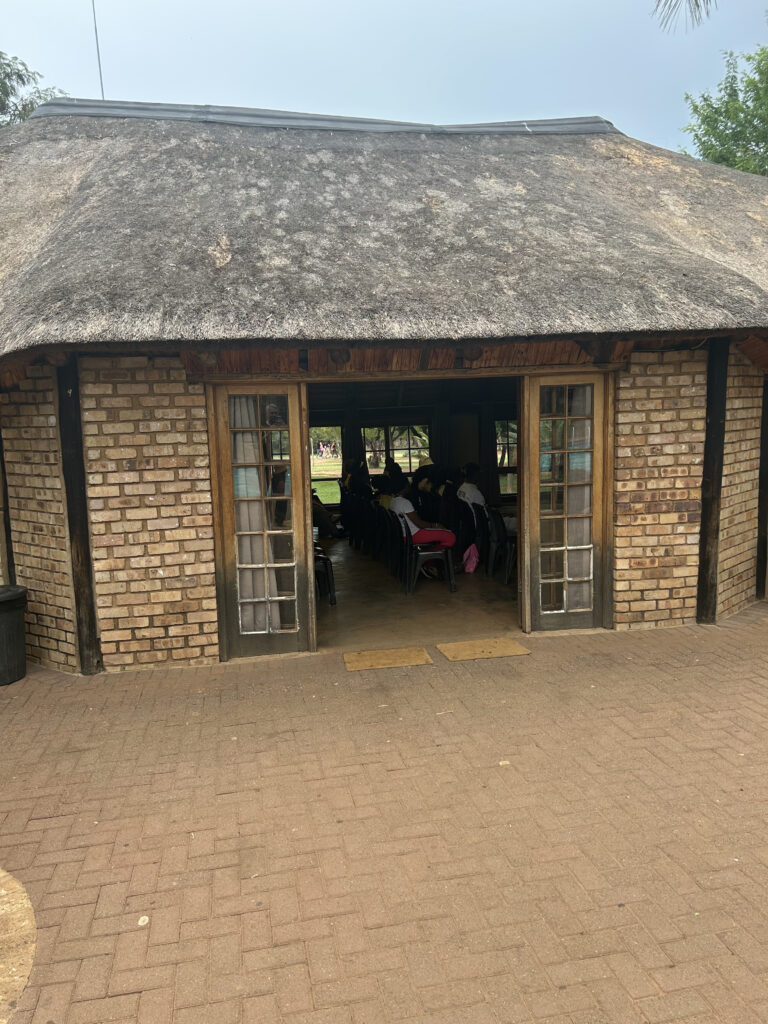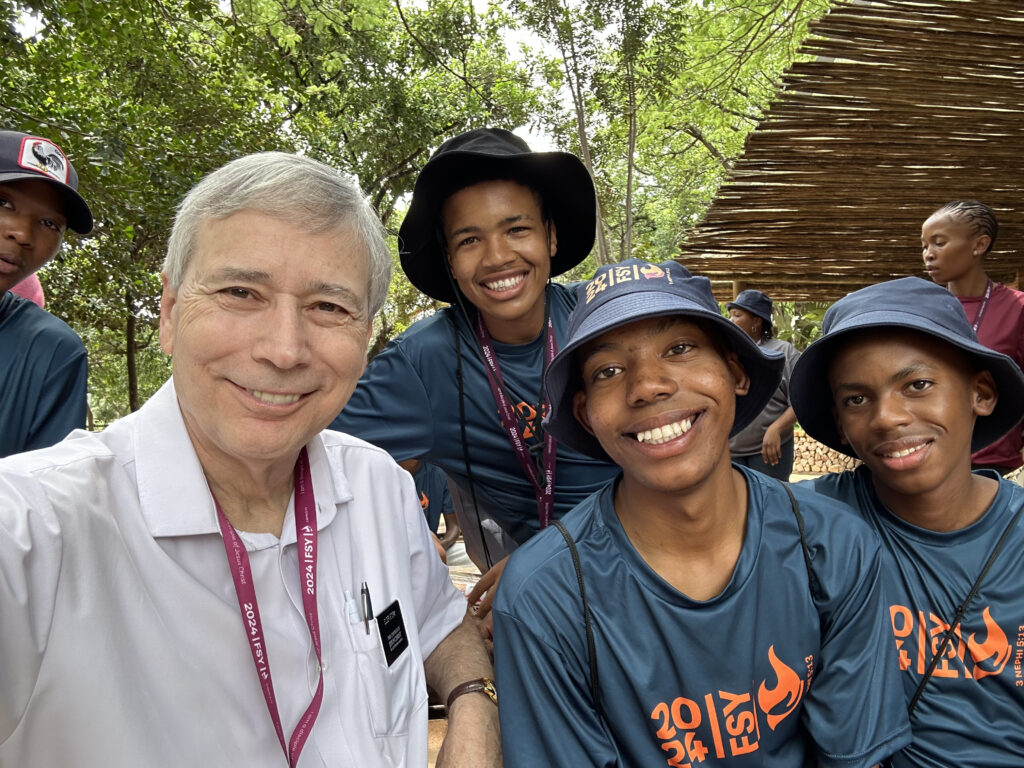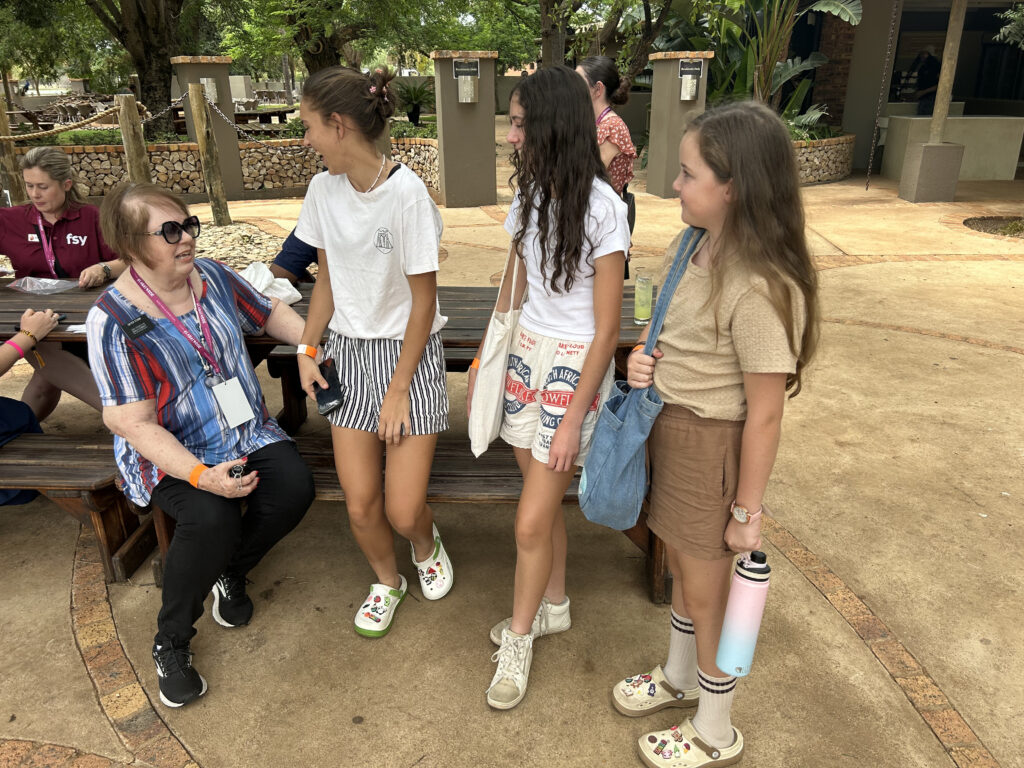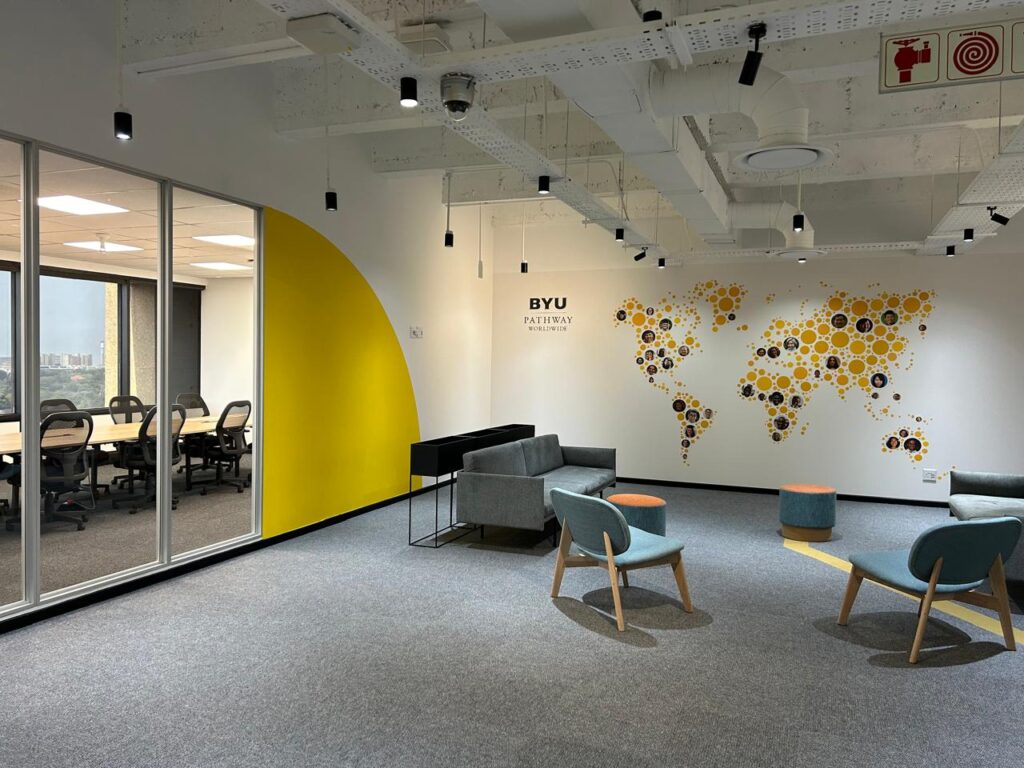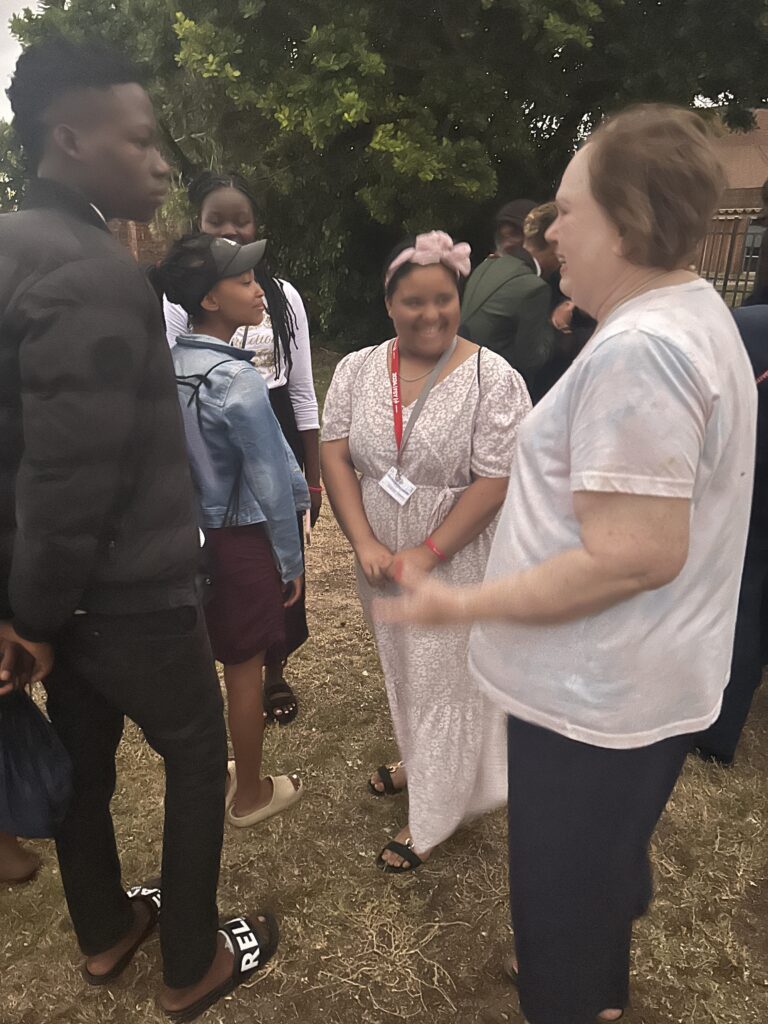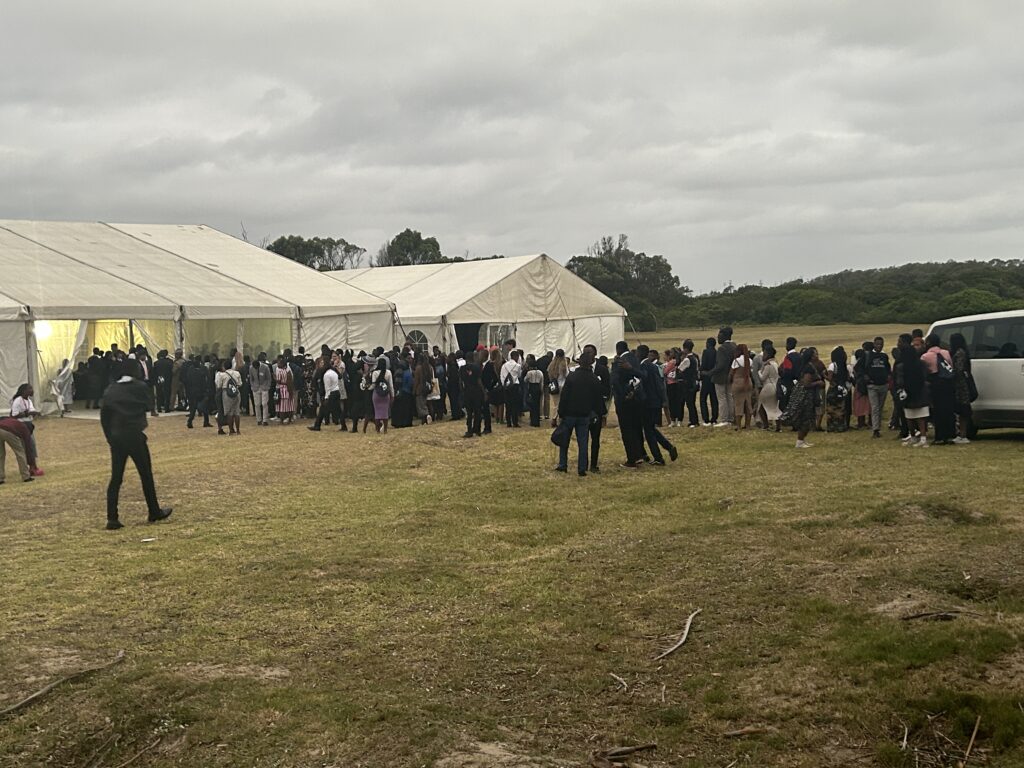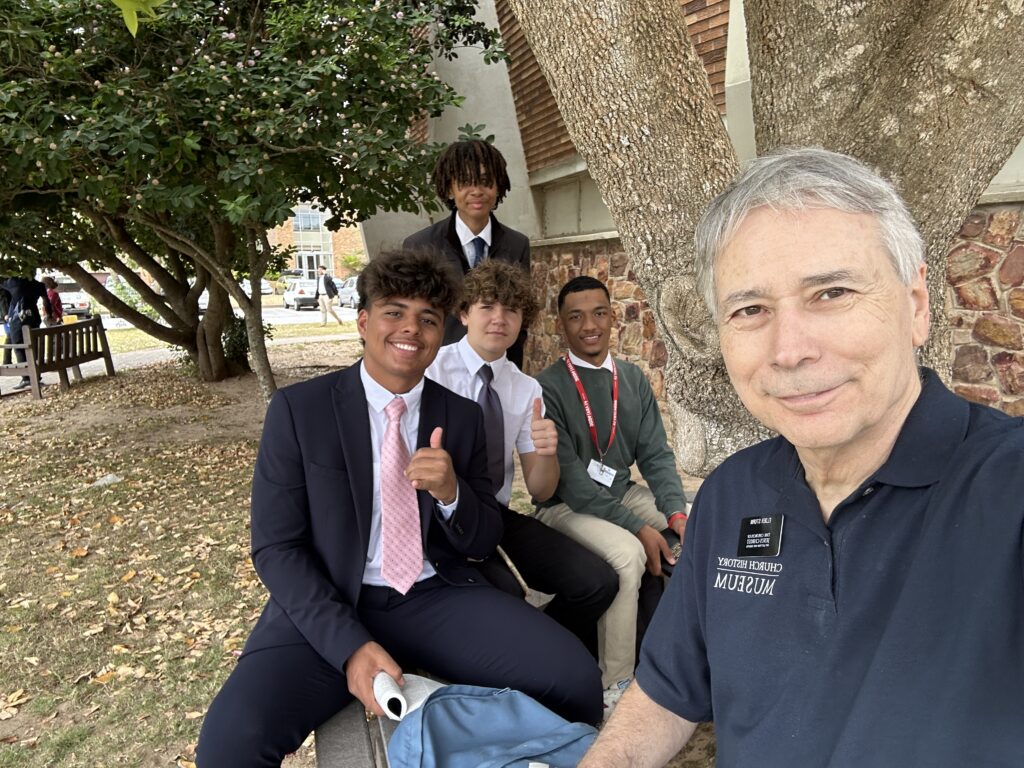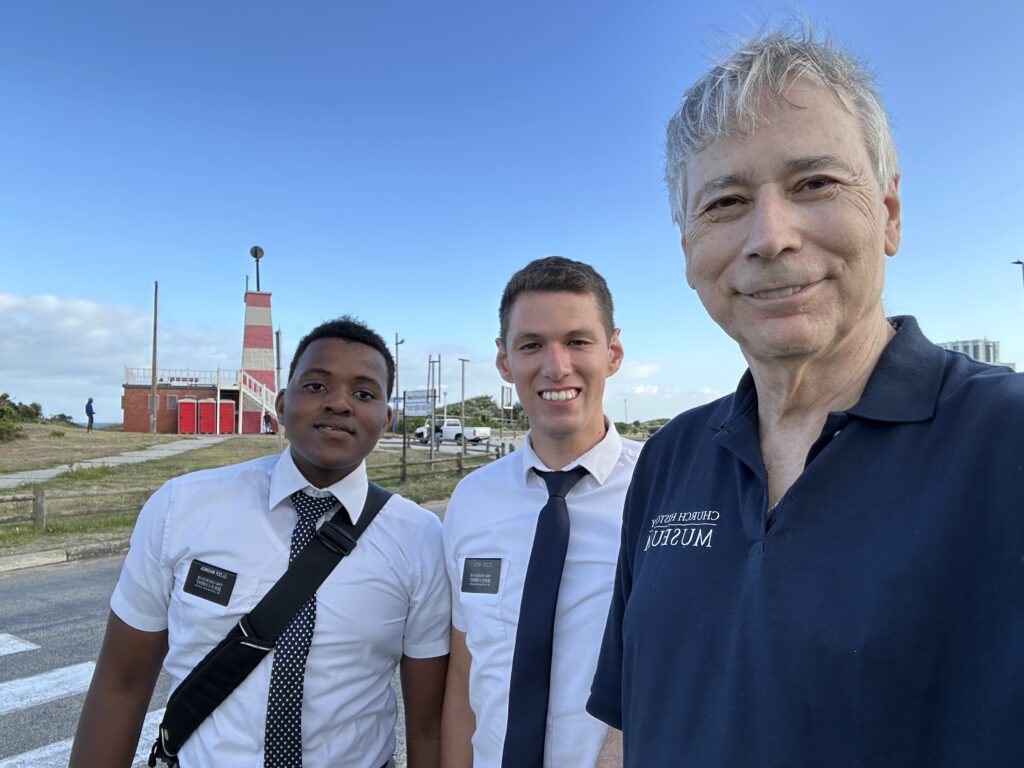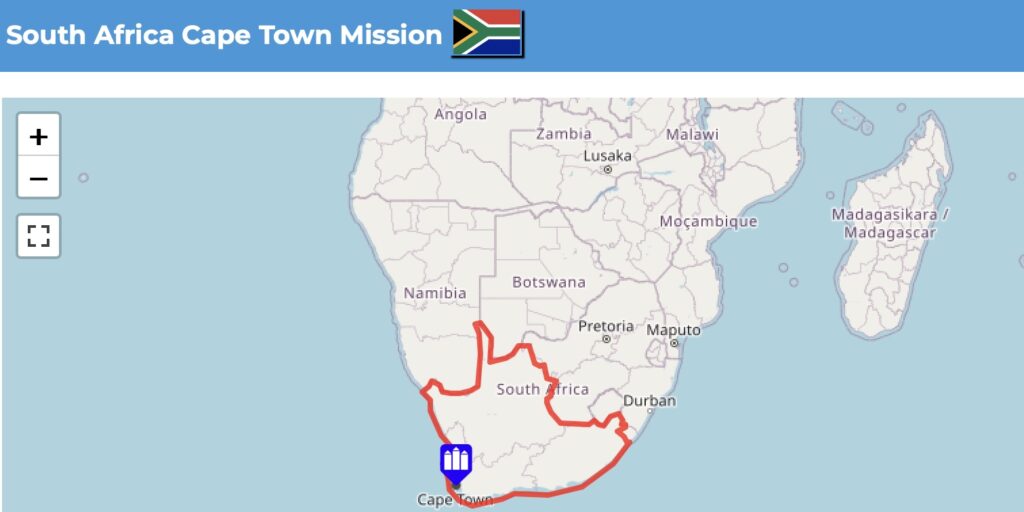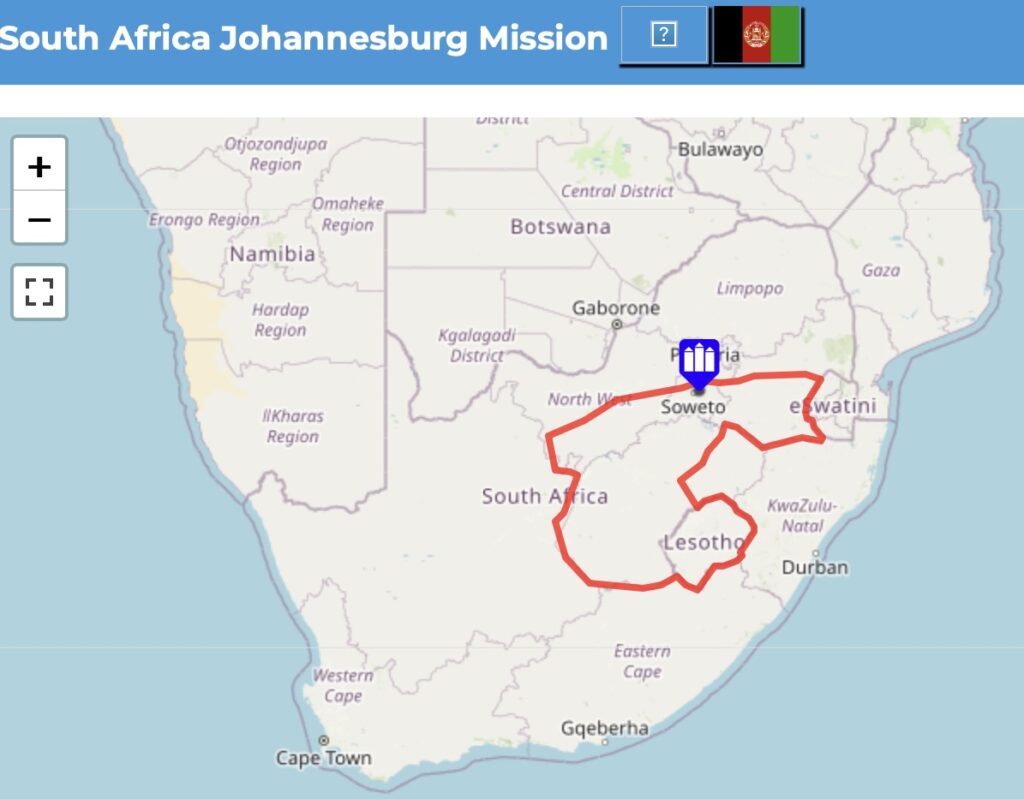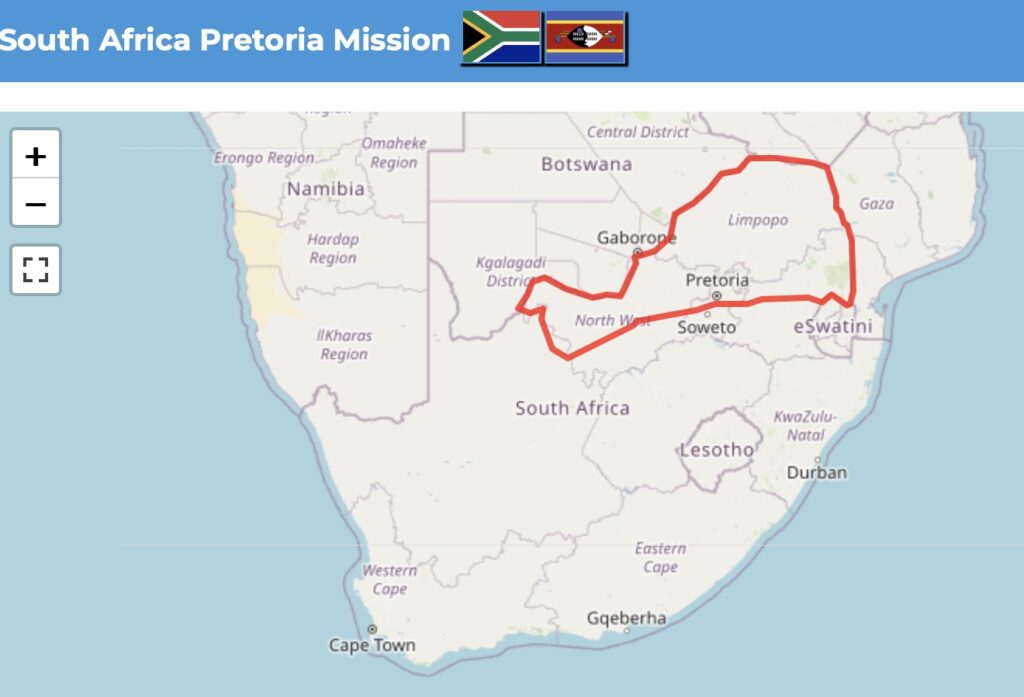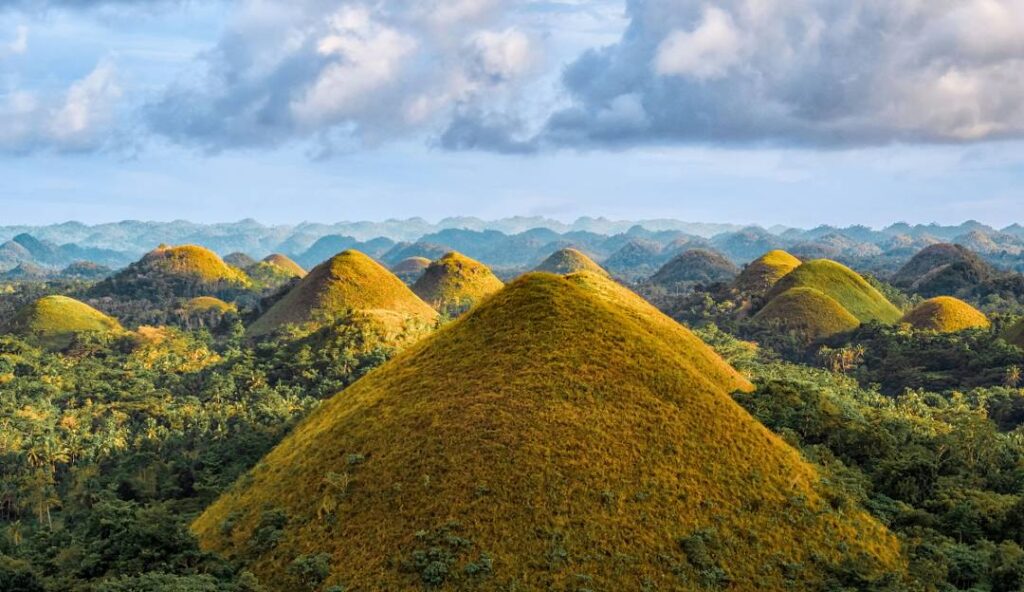Oops….I am really getting old and forgetful!
I was doing some end of year tasks this morning and as I sat in my home office thus engaged, I glanced out the window as the rain gently fell on some of the green foliage outside my office window. As I stared at the bushes, a gentle wind rustled the branches and leave. As the bushes swayed in the wind, rain formed droplets on the leaves that glistened in the morning light. As the raindrops grew in size and as the breeze buffeted the leaves back and forth the raindrops fell from the leaves seemingly to the rhythm of the instrumental Christmas music I was listening to.
As I stared out the window, I was lost in a sweet gaze thinking of days past, eventually I blinked, shook my head, and returned to what I had been doing when I had a thought….I should reactivate the www.marvinlstorm.com blog that I published for friends and family during our two-year mission….but this time the blog could be for the Storm Kids and Grandkids.
I opened up a browser window on my computer and typed in www.marvinlstorm.com and pressed enter. In an instant, up popped the blog. I navigated to the edit section of the blog and then to the posts that I had published over the two years we served in the Philippines and South Africa.
When the blog posts appeared on my computer screen, sitting on top of all of the blog posts was a draft version of my last blog entry dated May 5, 2025. I had written this post somewhere between Johannesburg and Atlanta as we were returning home. I had intended to send this post, after reviewing it one last time, but obviously I had completely forgotten about this post and never sent it.
I thought about just ignoring this last post but then I thought what-the-heck…all I have to do is click on “Post” and it will be published and sent to everyone.
After adding the above comments….I was ready to click and send this last blog post from Marcia and me…..but before I do this, we wanted to wish you all a very Merry Christmas and the best in the New Year.
Here is my post……
One Last Hurrah
After nearly 26 months of serving in the Philippines and in South Africa, we packed our bags and headed back to the US.
Nearly, fifty-four years ago, after finishing my two and half year mission in South Africa, I was dropped off at the Johannesburg airport and boarded a flight to Rhodesia (now Zimbabwe). A few days later, after visiting several families I had met and had baptized during my missionary service in Salisbury (now Harare), I flew to Nairobi, Kenya and went on safari. Then I was off to Addis Abba, Ethiopia, then to Jerusalem, on to Amsterdam, London, and finally arriving in my hometown of Belle Fourche, South Dakota. Now all of these years later, we are ending our senior mission in South Africa again I was dropped off at the same Johannesburg airport. I had mixed feelings about leaving then as I do now but never regretted a minutes of my missionary service then or this time around.
Before We Left
The last month in South Africa was a whirlwind of traveling including visiting Cape Town and then a road trip to Pietermaritzburg which is about fifty miles west of the coastal city of Durban on the east coast of South Africa on the Indian Ocean.
While we were there, I had a chance to visit with the daughter of a family was I close to when I served in Pietermaritzburg – the Ball Family. Jenny (Ball) Brandon, was the youngest of the three Ball children. I kept in touch with Jenny for over four decades. She worked for the South Africa government and after she retired, a number of years ago, I lost contact with her. It was good to hook up with friends that I had known so long ago in South Africa and spend a Saturday afternoon together.
A week later, two of our kids (Jodi – our eldest daughter and Justin – our youngest son, and his wife Tamie) made the trip from the US to spend ten days with us. While they were here, we were on the go everyday.
Day 1: Jodi arrived in the evening. I had rented a two-bedroom Airbnb cottage for them that was less than a mile from out apartment. Justin, and his wife Tamie, arrived the next day.
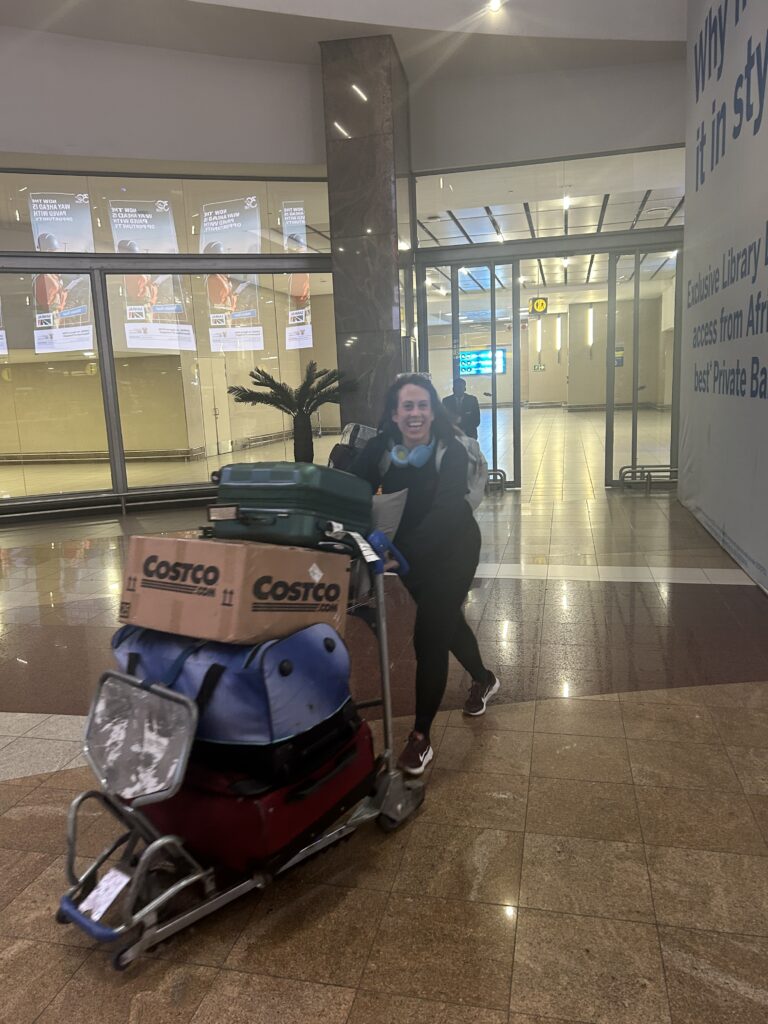
Our daughter Jodi arriving at the Johannesburg Airport. Being the thoughtful person she is, she brought extra suitcases and boxes filled with clothes to donate to an orphanage.

After nearly two years….mother and son reunite.
Day 2: I didn’t plan a heavy schedule for the first two days because the fights to South Africa are over 30 hours in lapsed time and I figured my kids would be bushed. However, they didn’t have the Jet Lag that I expected them to have….the reason for is likely because they are decades younger than their parents.
Day 3: Johannesburg is the largest city in South Africa and one of the largest in Africa. We took a Red Bus tour of the city that took most of the day. One of the sites we visited on the tour (which was a jump on and jump off bus tour) was Nelson Mandela’s home office and his official residence when he was President of South Africa.
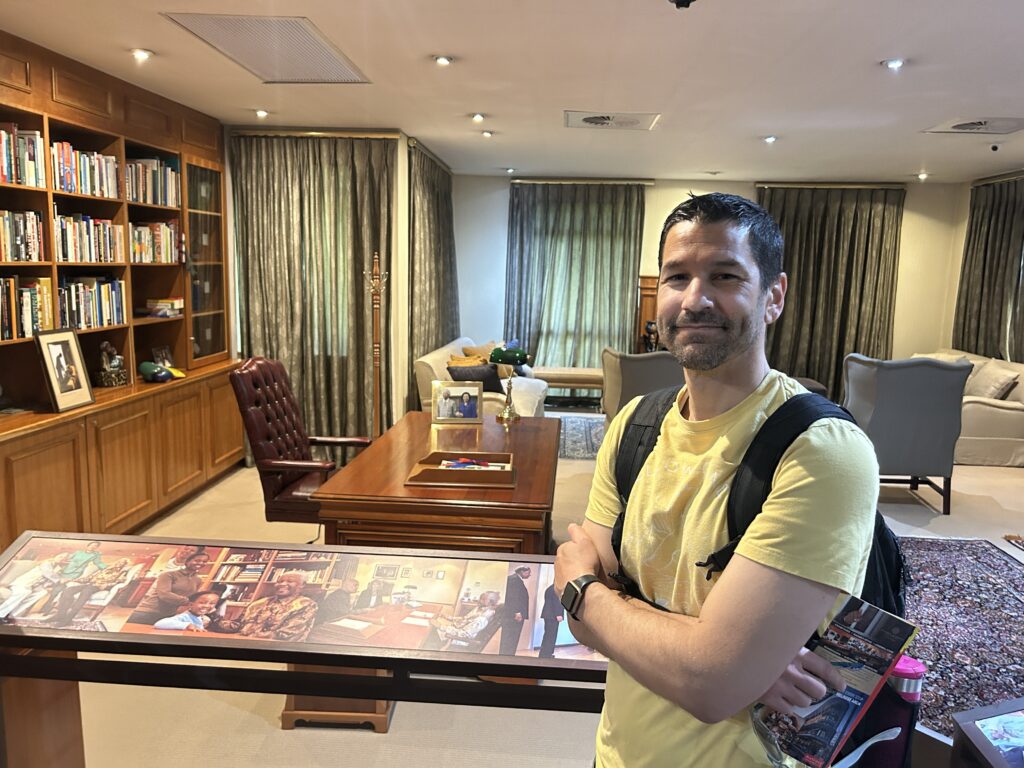
Our son Justin at Nelson Mandela’s home office,
We also visited the apartheid Museum and our kids spent several hours learning about how apartheid was introduced in South Africa and the decades long struggle of how the black Africans transitioned away from apartheid and formed their political party – the African National Congress (ANC), how the country has evolved over the decades and how apartheid left a lasting imprint on the country.
The next bus stop was Constitution Hill which is where the South Africa government held trials for many of the freedom fighters of the apartheid era such as Nelson Mandela. This area housed one of the prisons where Mandela and others stood trial and were incarcerated during their trials. It was pretty bleak. We ended the tour at the Melrose Arch shopping area for dinner.
Day 4: Th e day started at 5:00 am. I rented a mini-van for a trip to a game reserve which was nearly three hours away. We had a good day of finding animals including elephants, zebras, hippos, rhinos, wildebeest, and many others.
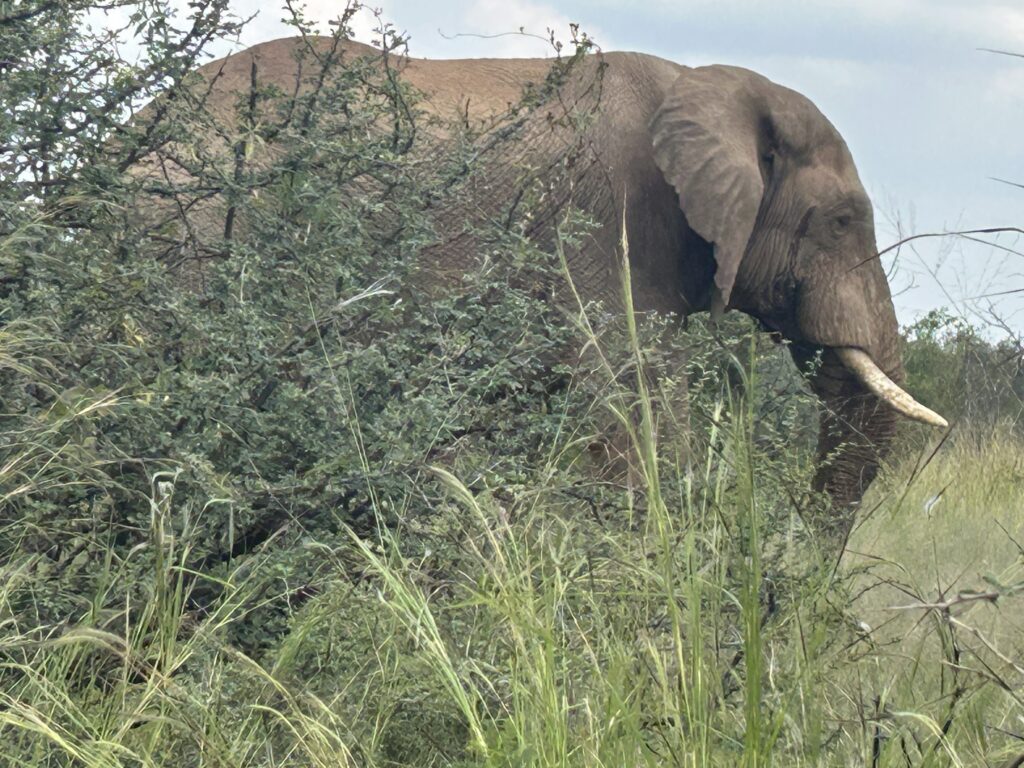
The elephants seemed to be oblivious to our presences as they strolled by our van,
Day 5: Jodi is our humanitarian oriented child. She has been on humanitarian trips to Uganda and to Poland a month after Russia invaded the Ukraine to participate in humanitarian efforts. In Uganda, she worked with the local people – primarily children. In the Poland, she was at a boarder city at one of the major exit points for refugees fleeing Ukraine after the Russian invasion to avoid the fighting that was raging at the time.
As mentioned, when I picked Jodi up at the airport, she had two large suitcases and a large box of clothes that she had collected from friends in her local ward in Utah. It turned out to be more challenging than anticipated to find an orphanage to accept donate clothes where we could personally hand out the clothes; however, we were able to set up a table at the Tsakane Ward where we attend church (which is about an hours drive from our apartment) and allowed members of the ward to pick out clothes that Jodi had brought with her. This was a big hit.

Clothes were distributed to church members of all ages.
This was a thoughtful thing that Jodi organized. The elementary-aged kids and especially the teenagers, were thrilled with the clothes from America. It very rewarding to see the expressions of gratitude.
During the last few days in South Africa, our kids were able to walk with the lions, visit a monkey sanctuary, and tour a diamond mind – a diamond mine similar to one where I purchased a diamond before returning home from South Africa after my first mission – my wife is wearing this diamond today.
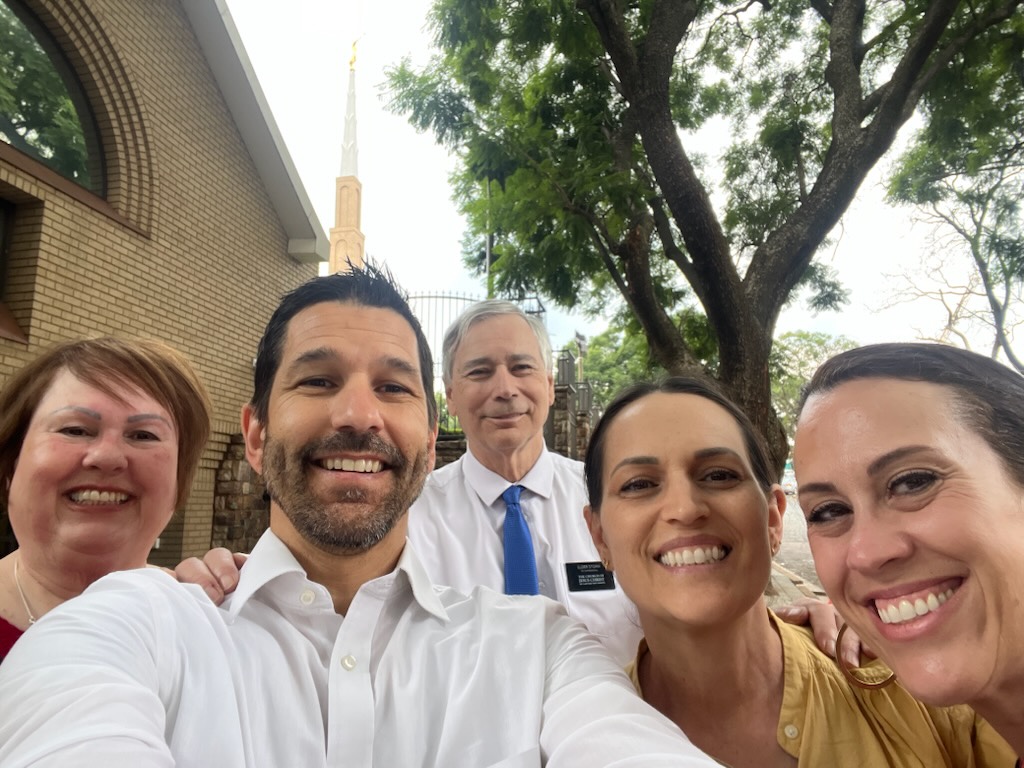
We capped our kids visit off with a session at the Johannesburg temple.
Final thoughts….Our mission was a little non-conventional in the sense that we served in two different missions – a half a world apart beginning in the Philippines and ending in the thirteen Africa South Area countries. Not only did we get to see much of the Philippines, but we were able to visit numerous countries in the Africa South Area.
If I had to encapsulate our mission experience into a few sentences, it would be….serving in the Philippines was challenging for Marcia since she doesn’t like the heat and humidity; however, she rarely complained. She was a trooper. Being able to return to South Africa was a thrill. The country has changed in more ways than I can share here.
The one thing I can say about both countries it that the people made our mission experience enjoyable. The Filipino people are so kind, enthusiastic, and accepting. The South Africa were as friendly and happy as remembered.
Each country has different languages that the people speak…in the Philippines there are two national languages (Tagalog and English) but most people speak more than these two languages. In the thirteen counties in the Africa South Area, there are numerous languages and most people spoke several different languages with English being the most universal.
The gospel is the common ground in all of the countries where we served and the stories captured and documented for future generations to enjoy all have a golden thread that ties the people together – the thread is the gospel of Jesus Christ and is the basis for love and understanding and the answer to most of today’s most challenging and vexing issues.
Our testimony of the Savior, while firm before we left to serve, has become much more multi-faceted, deep, and meaningful. Also, we learned to simply appreciate the country we live in much more, to enjoy the friends we made, and to treasure the memories that were created while serving our Heavenly Father.
Thanks for allowing us to share our experiences with you.
This is Elder and Sister Storm signing off one last time…..

